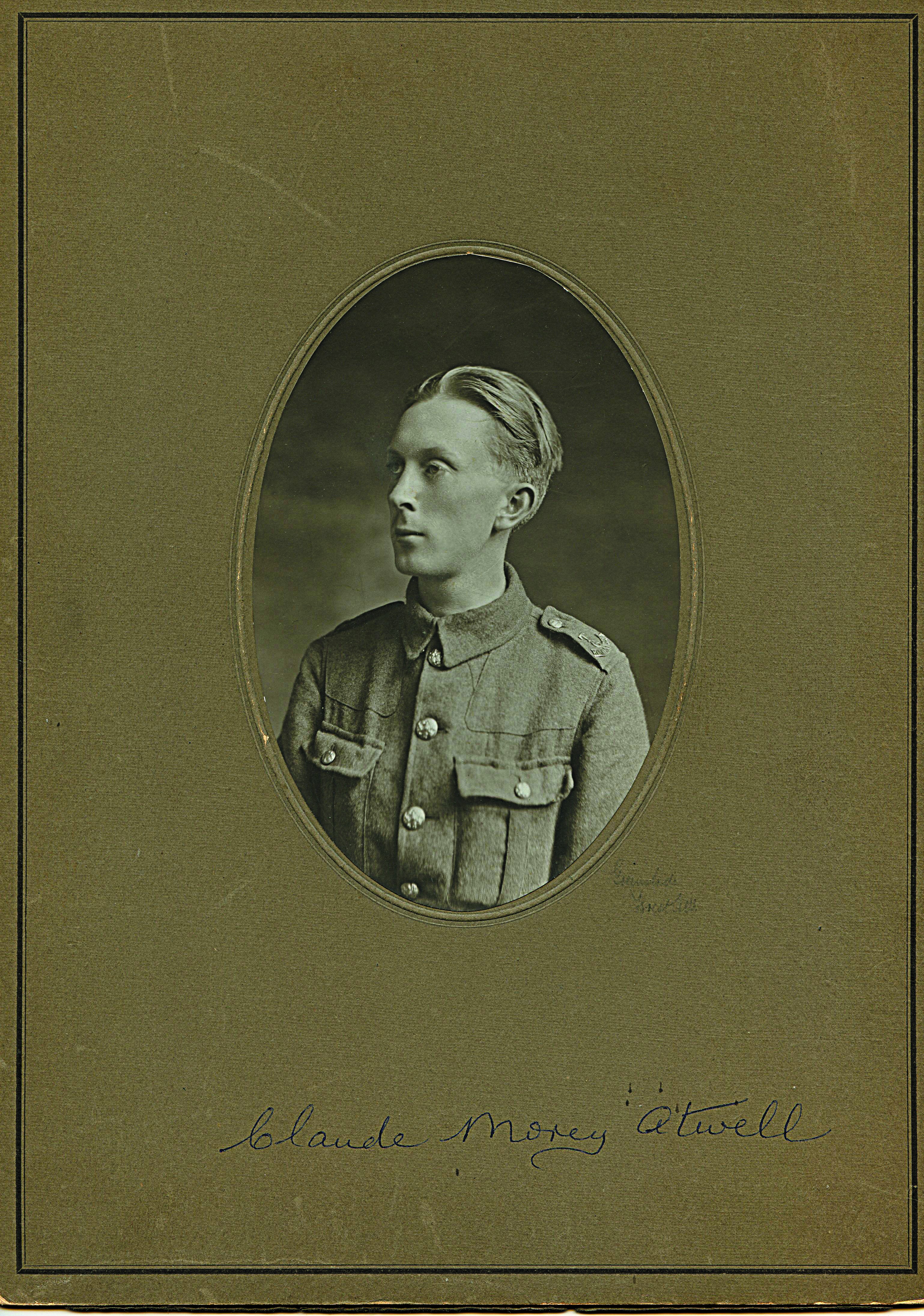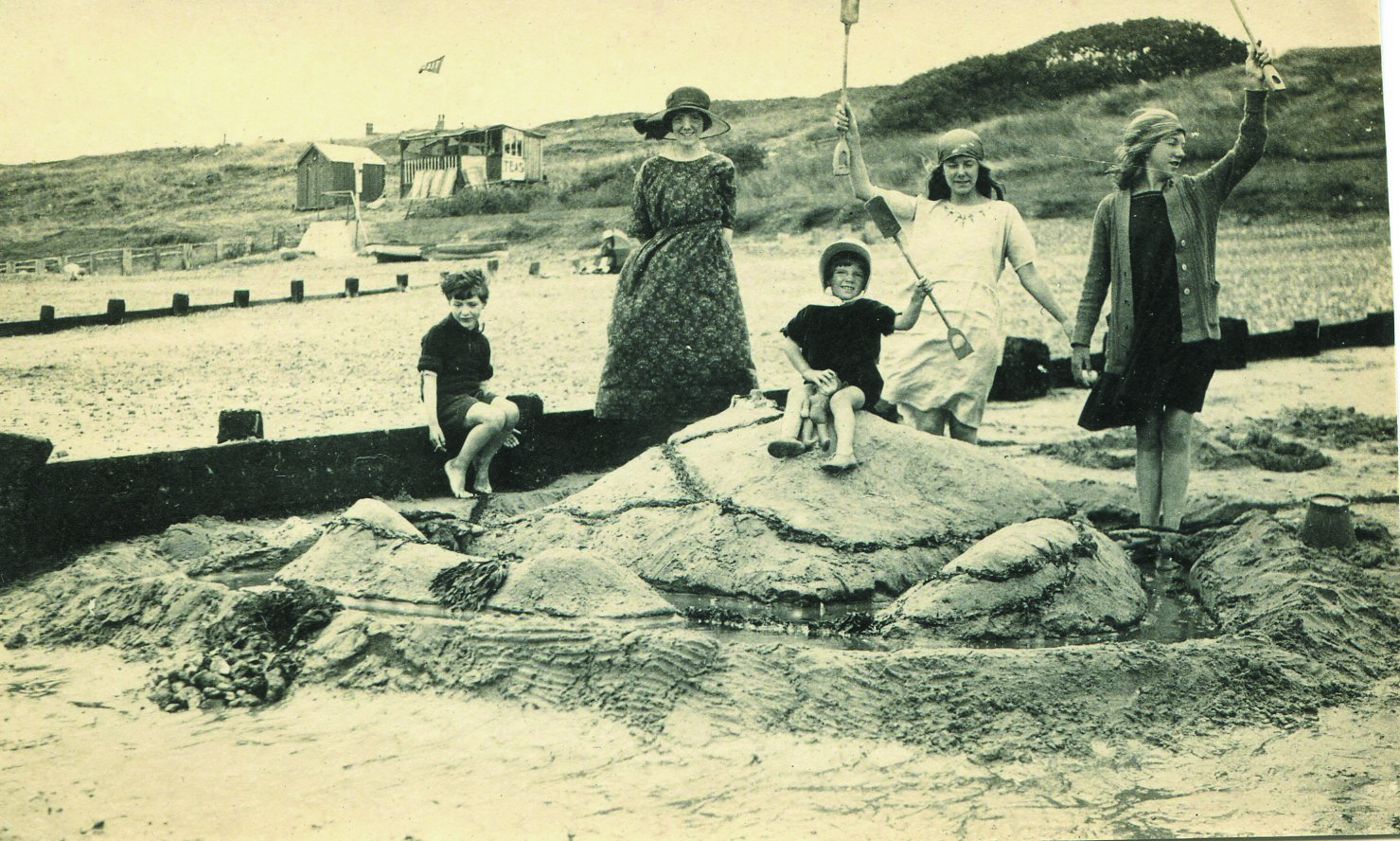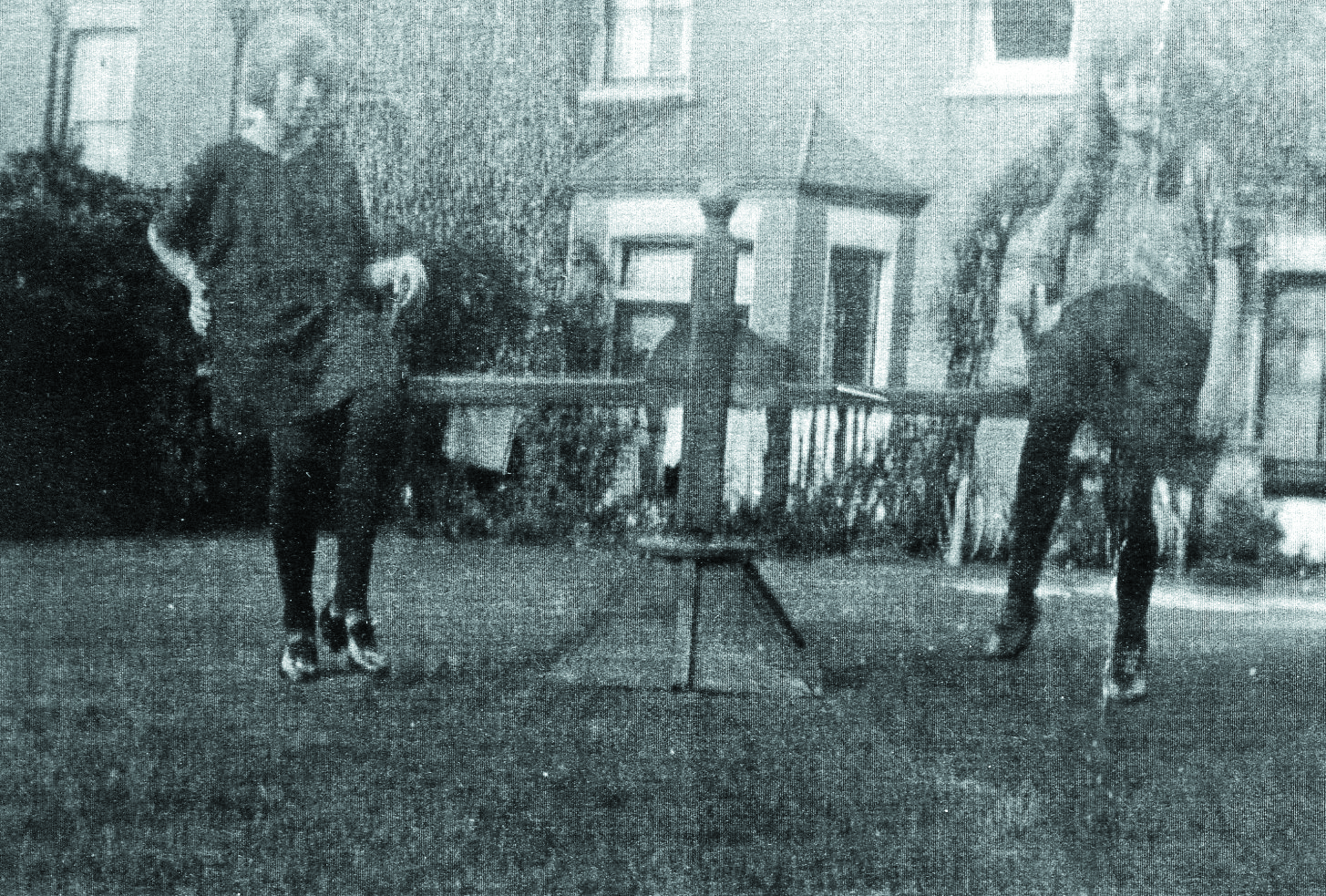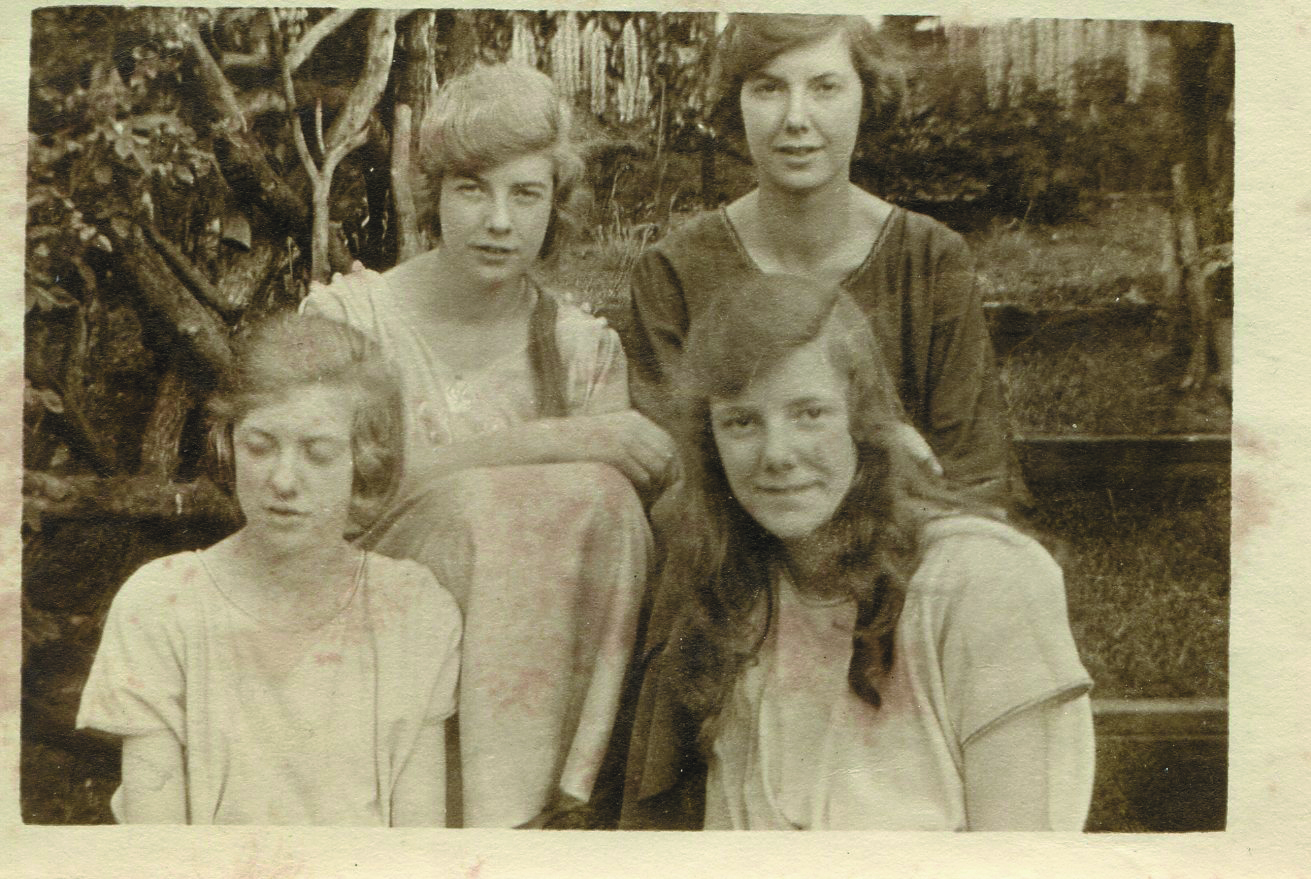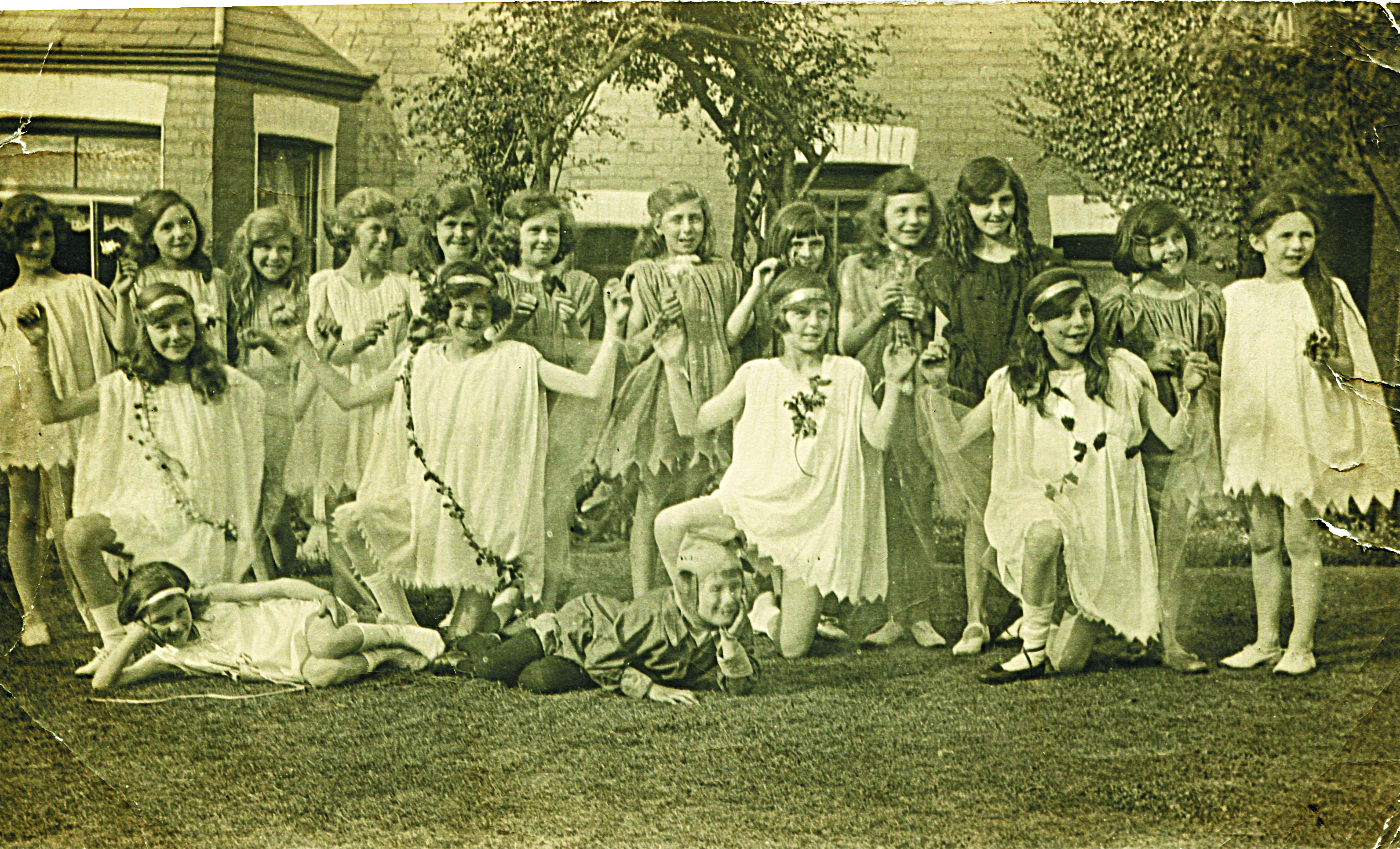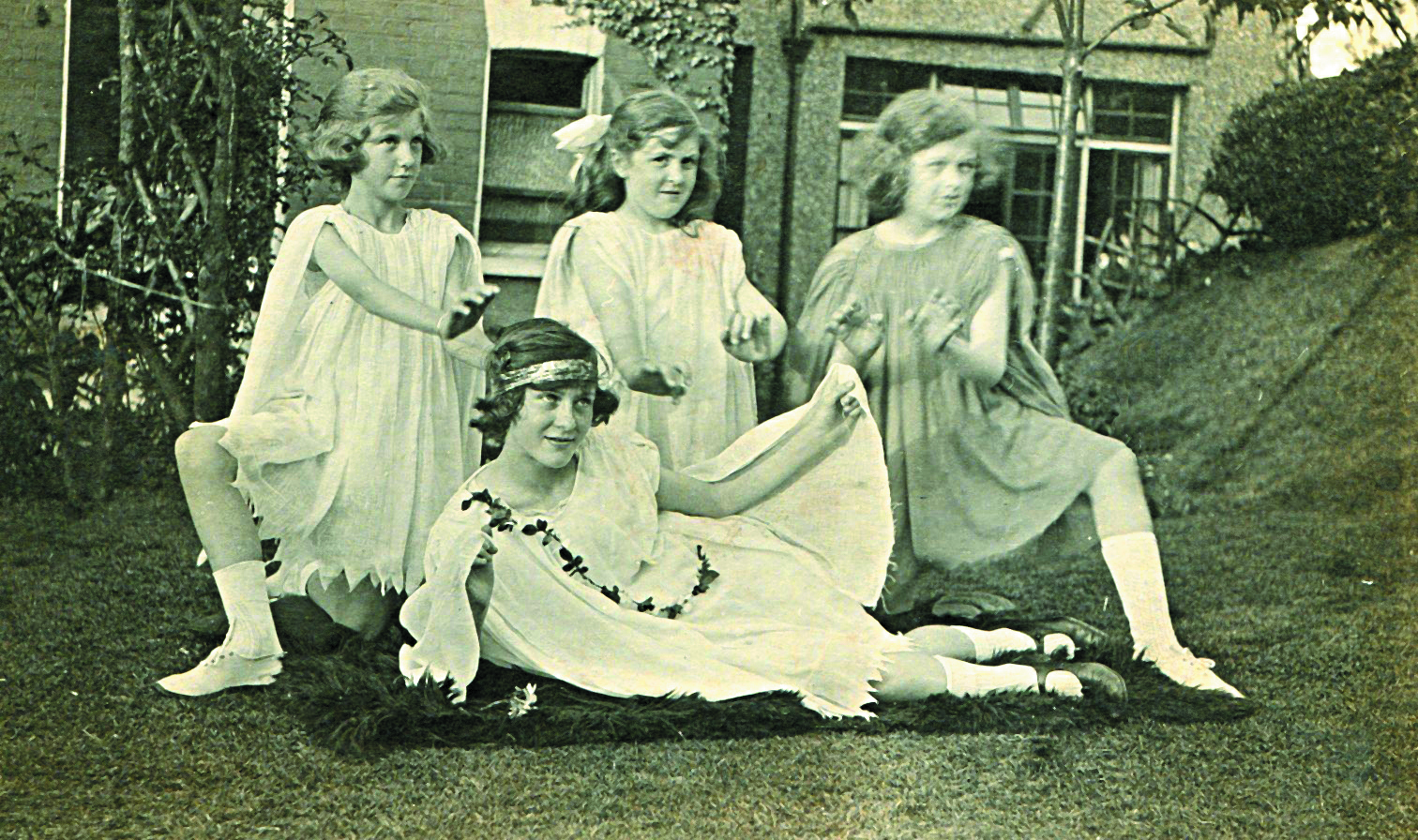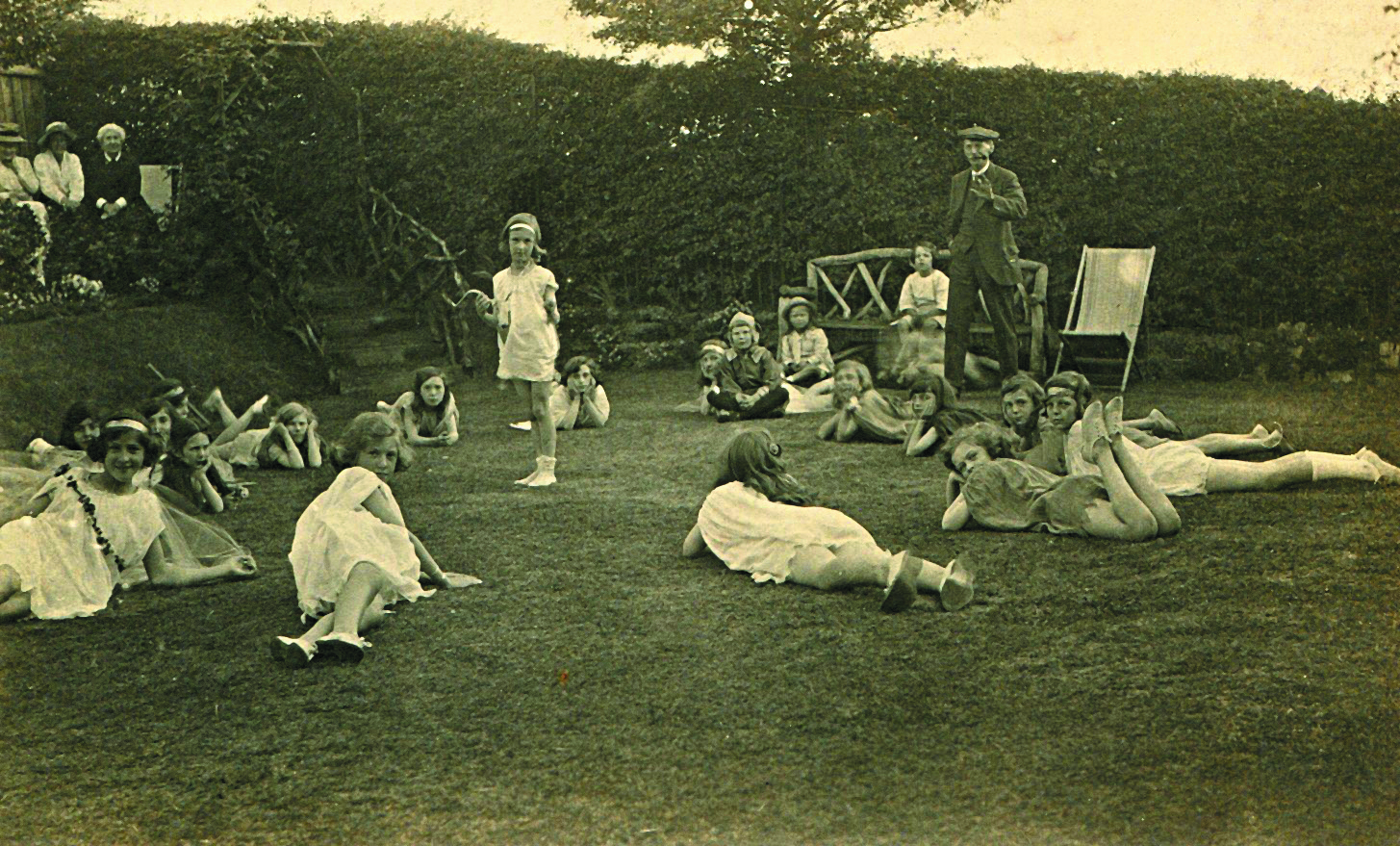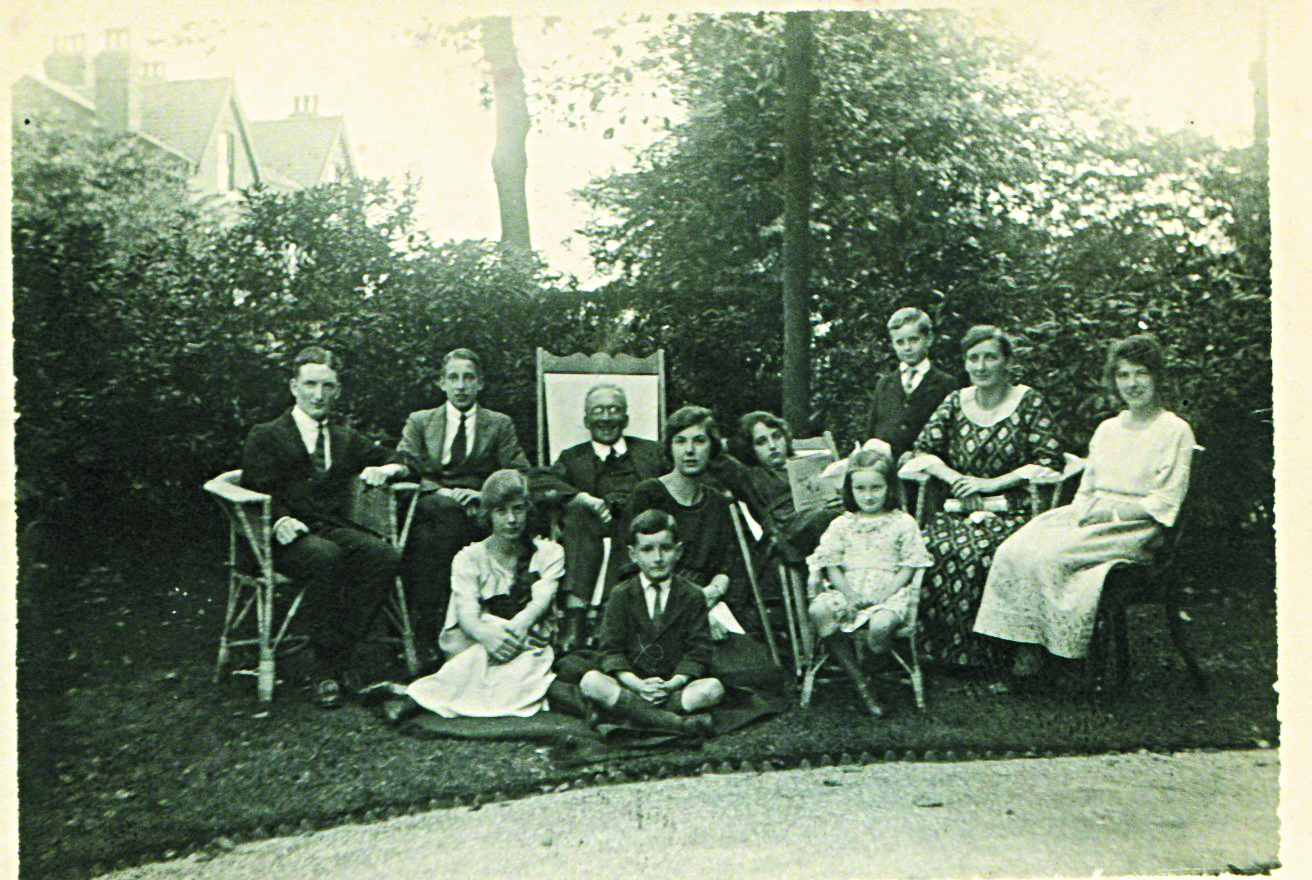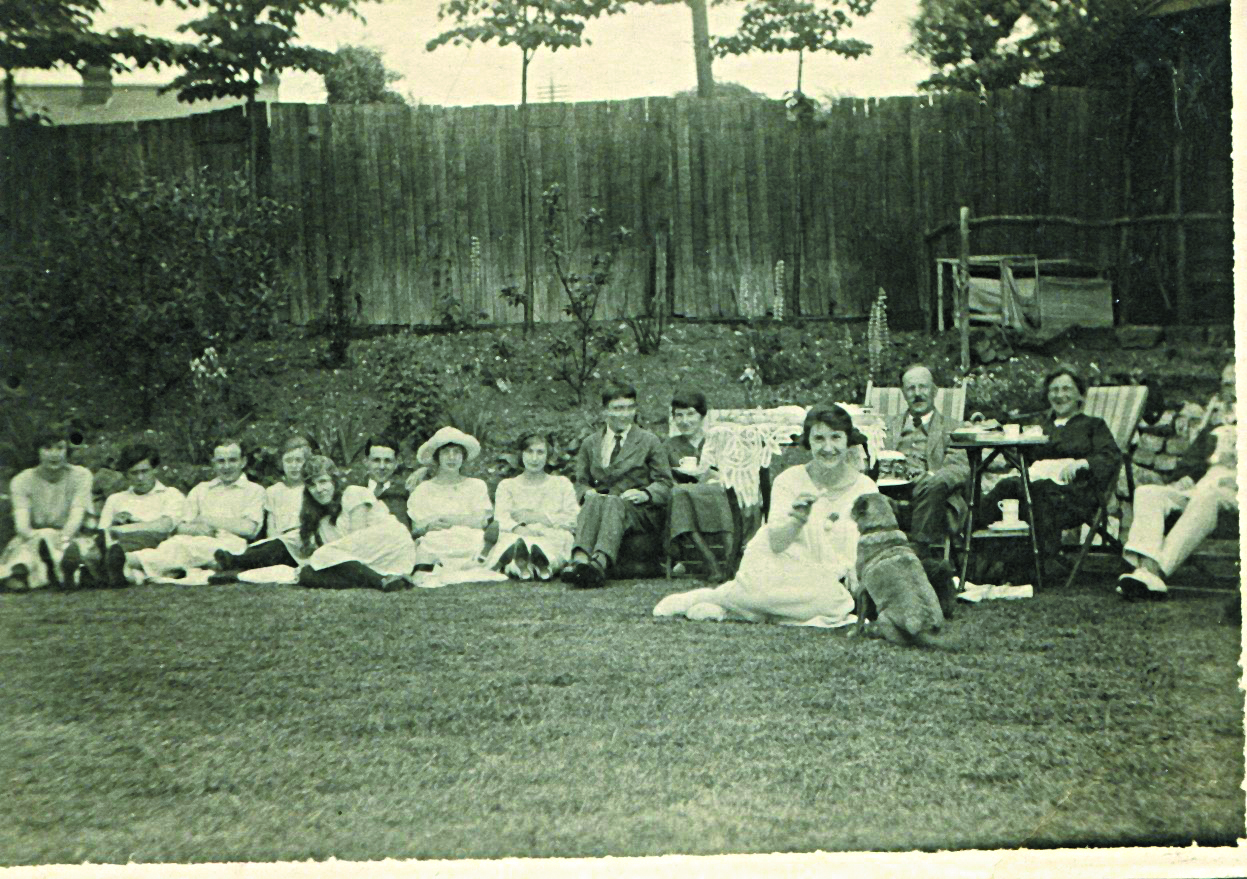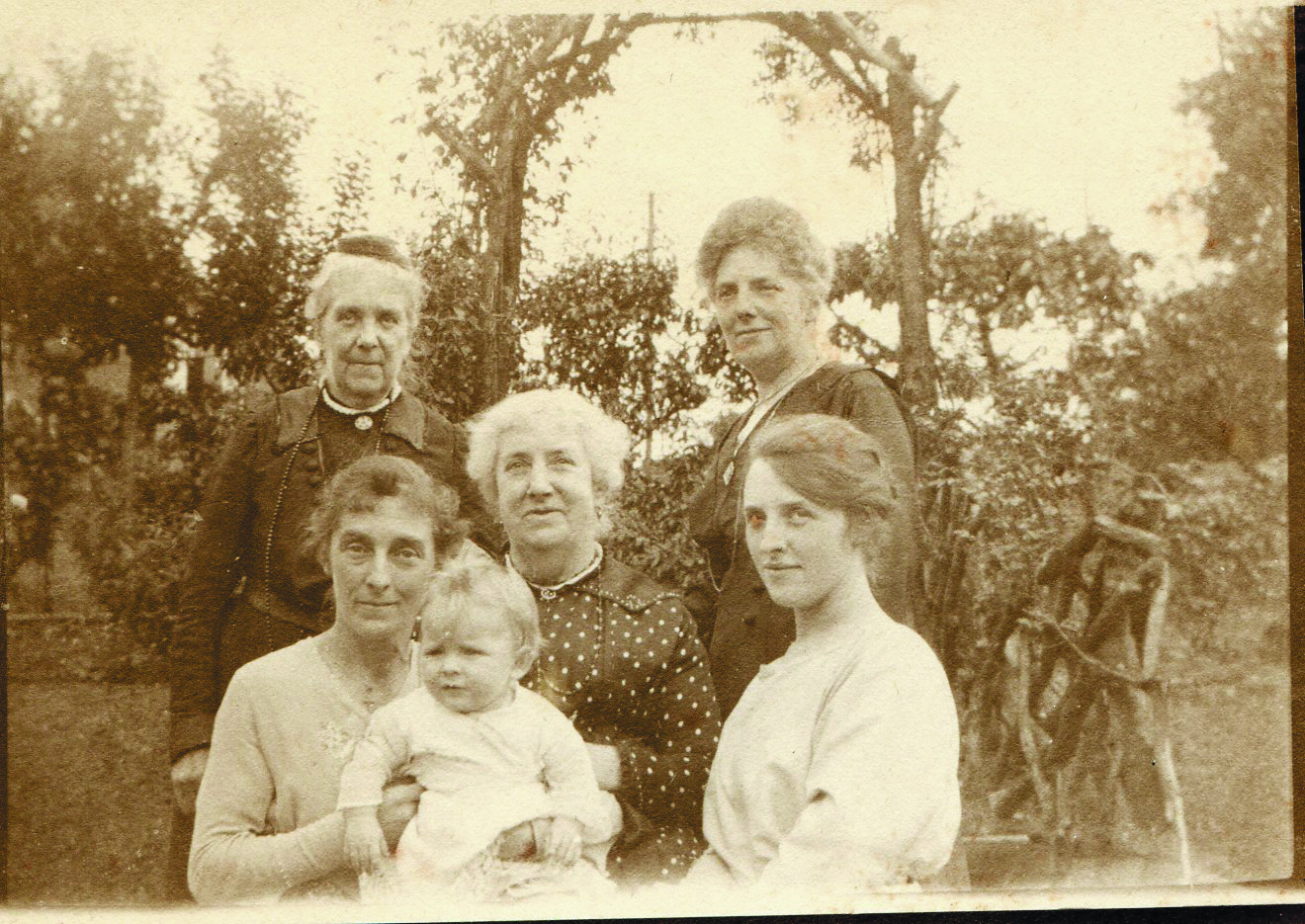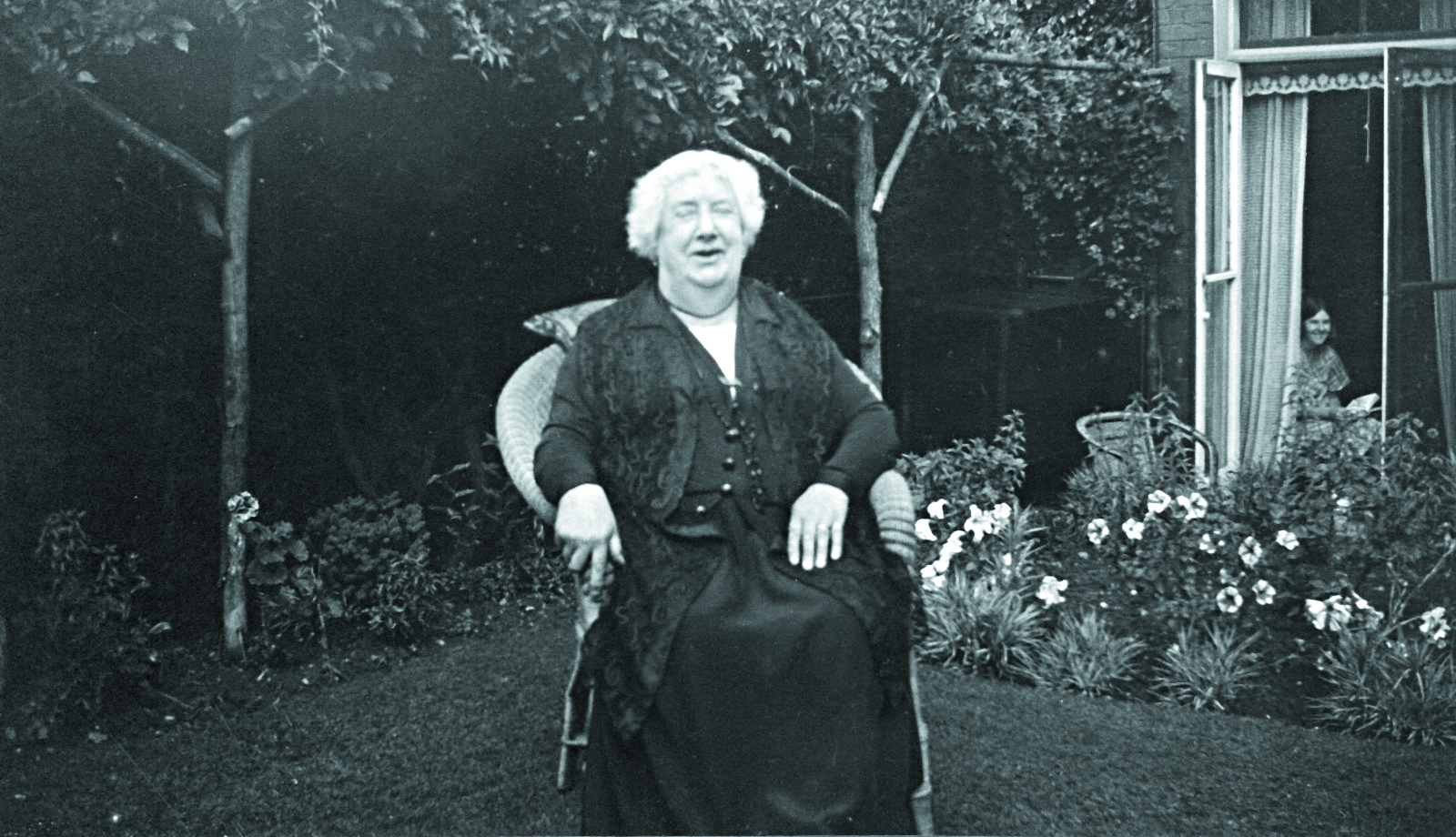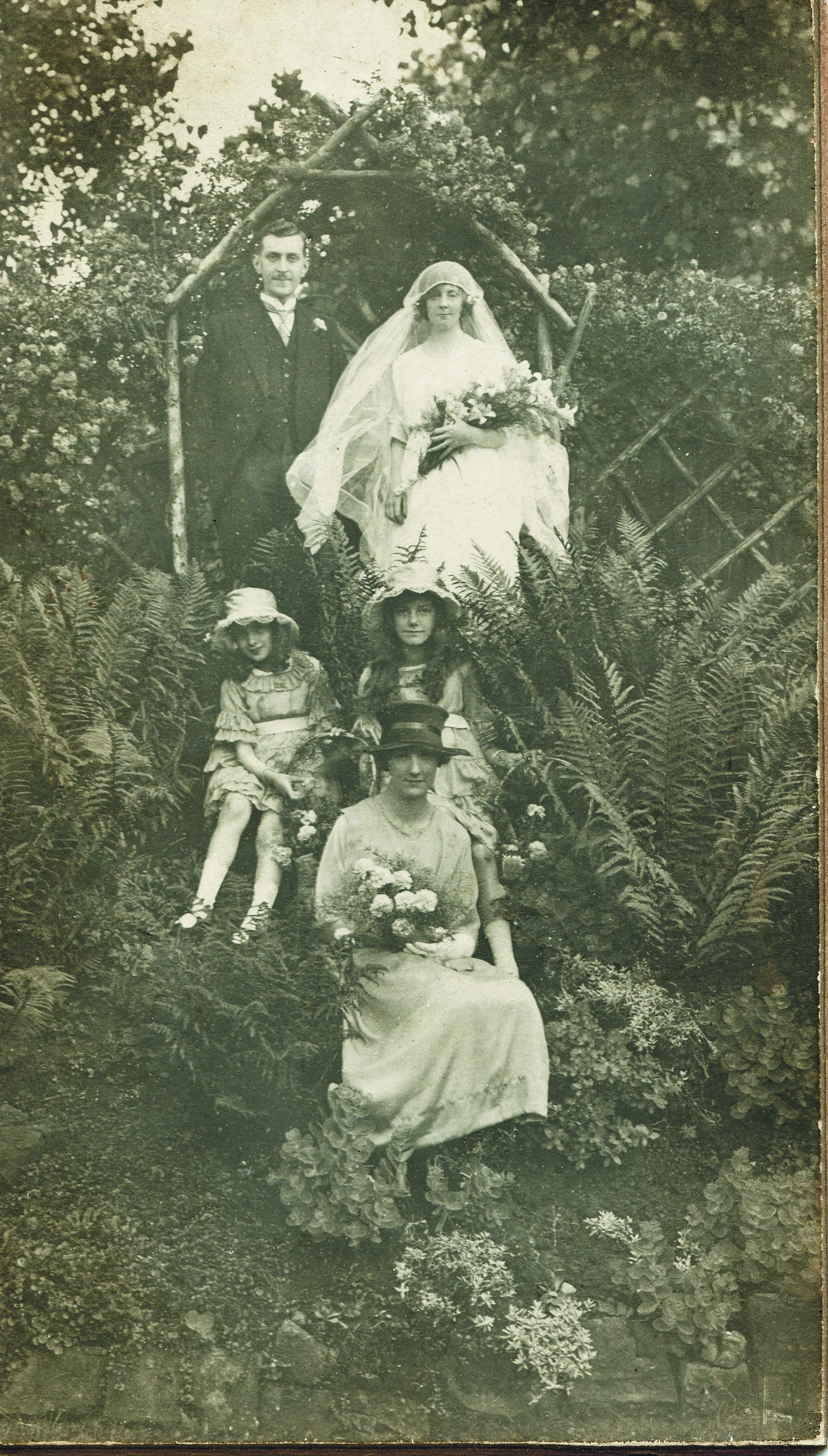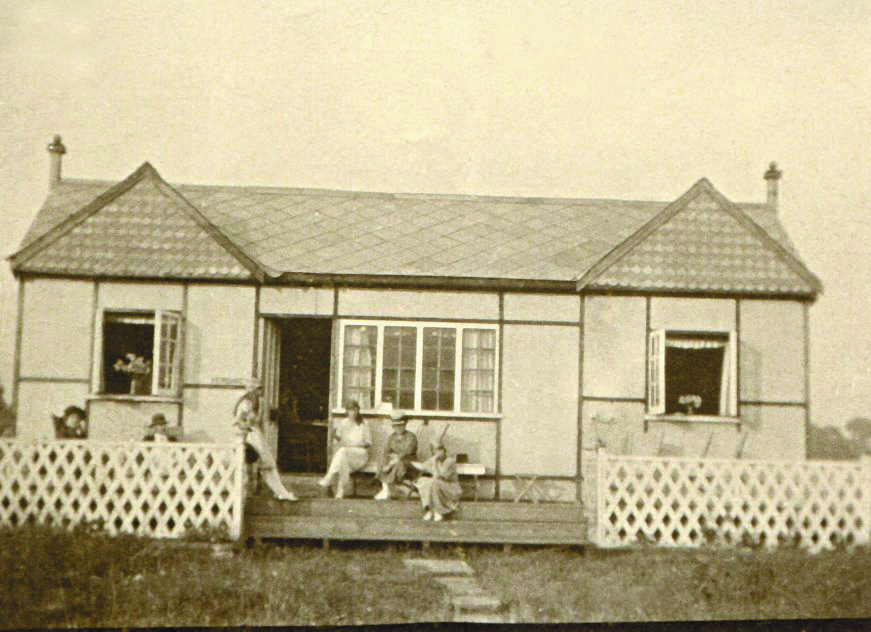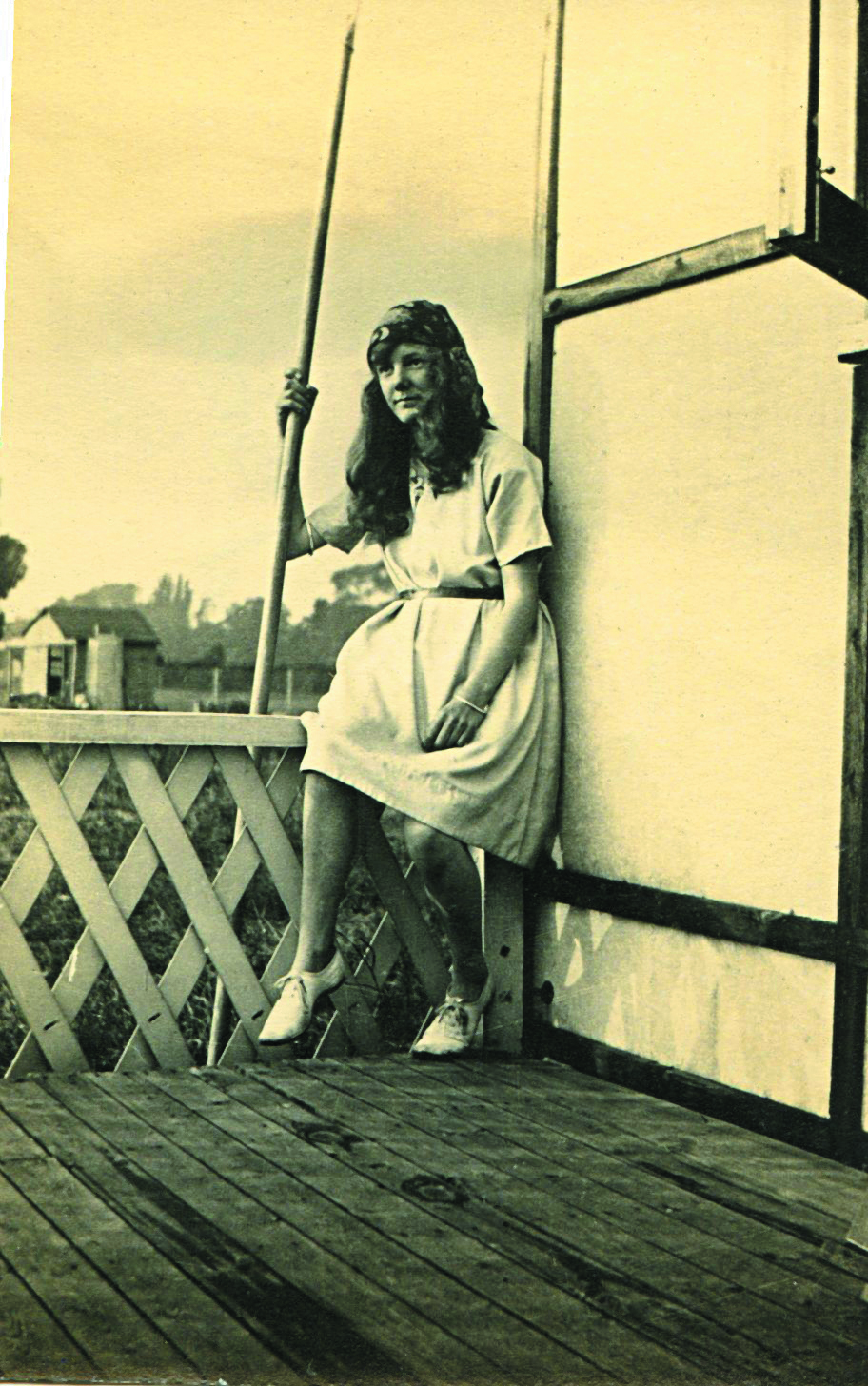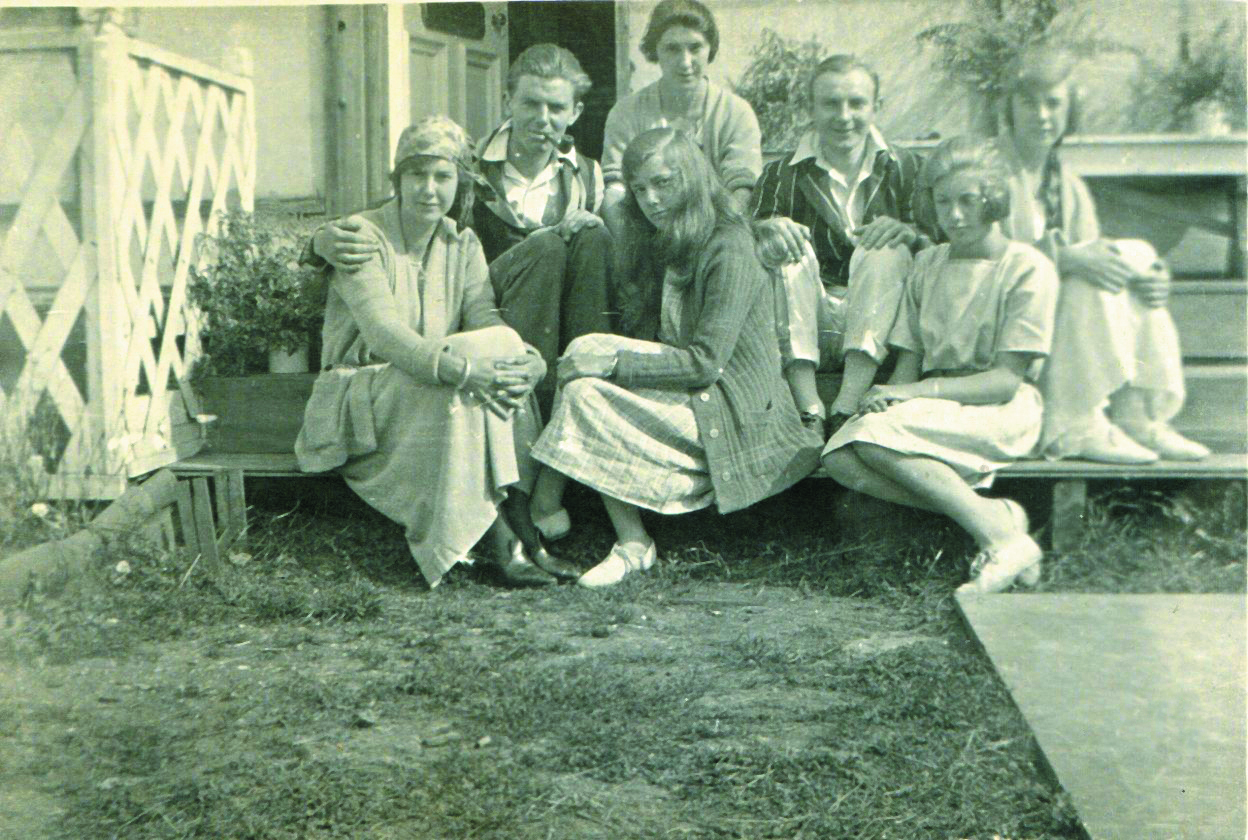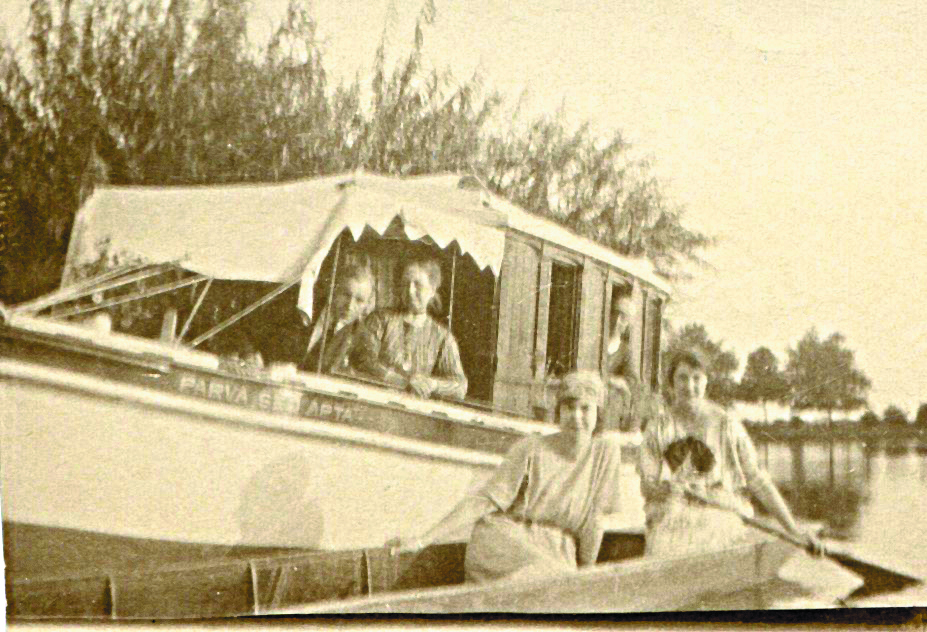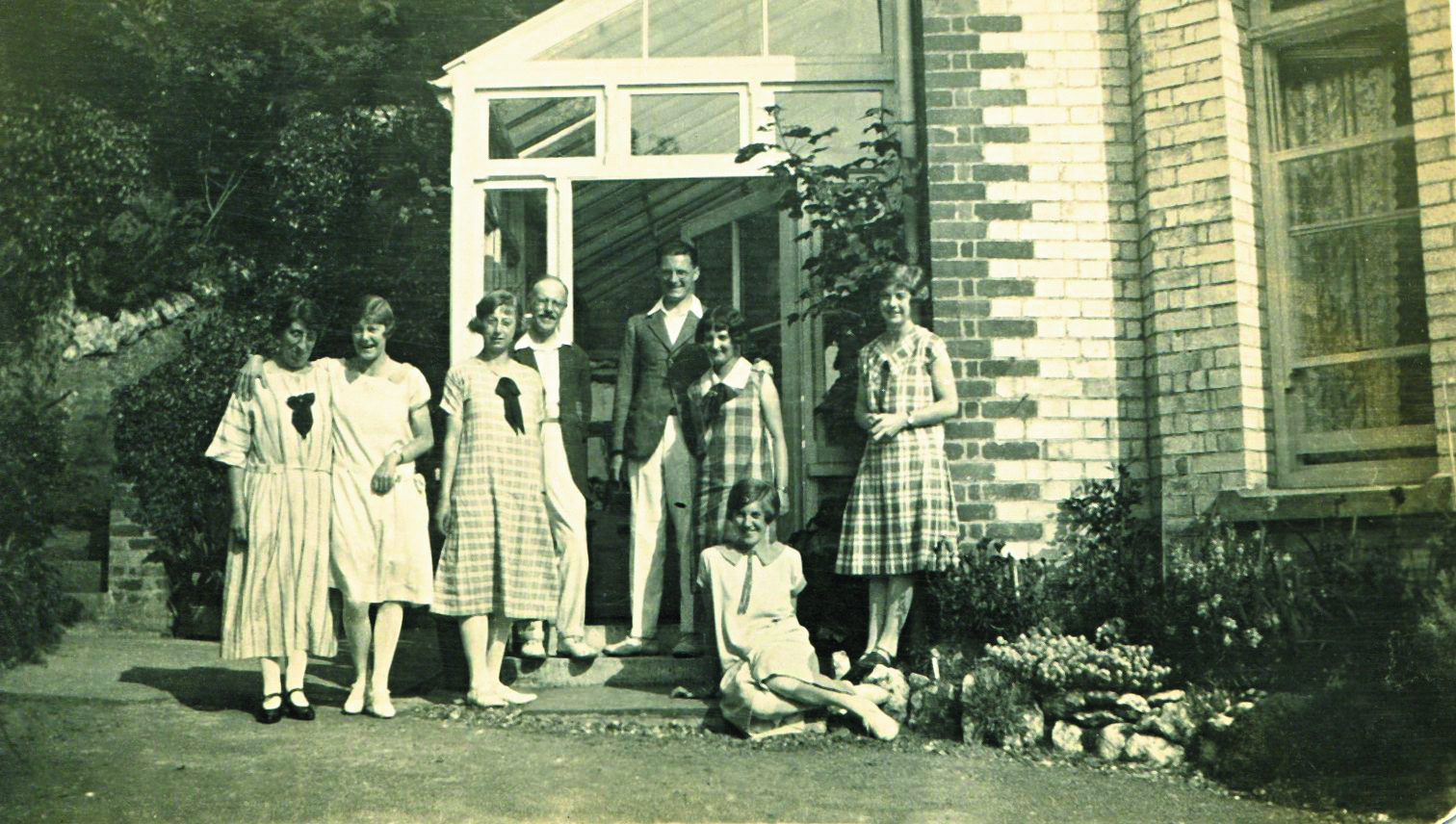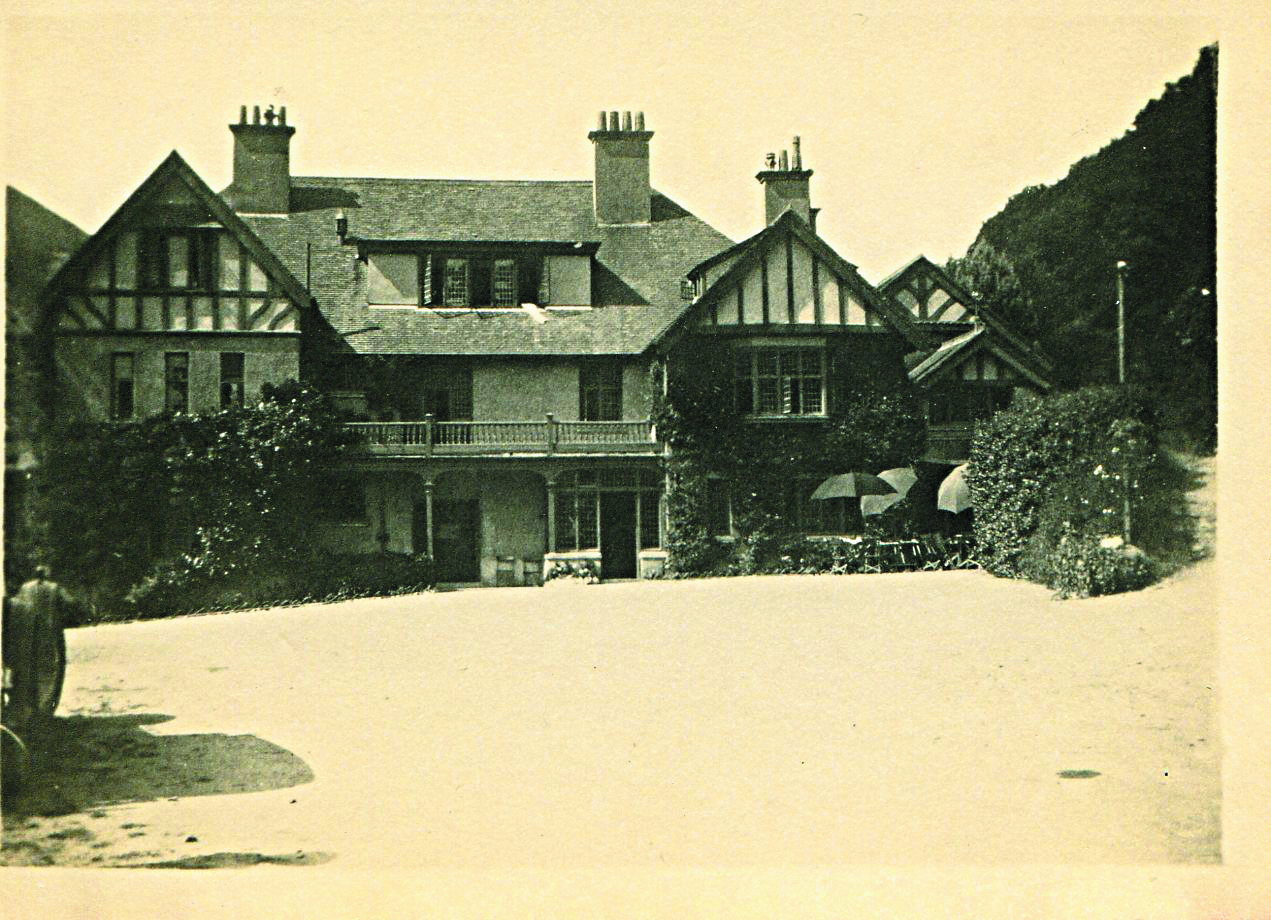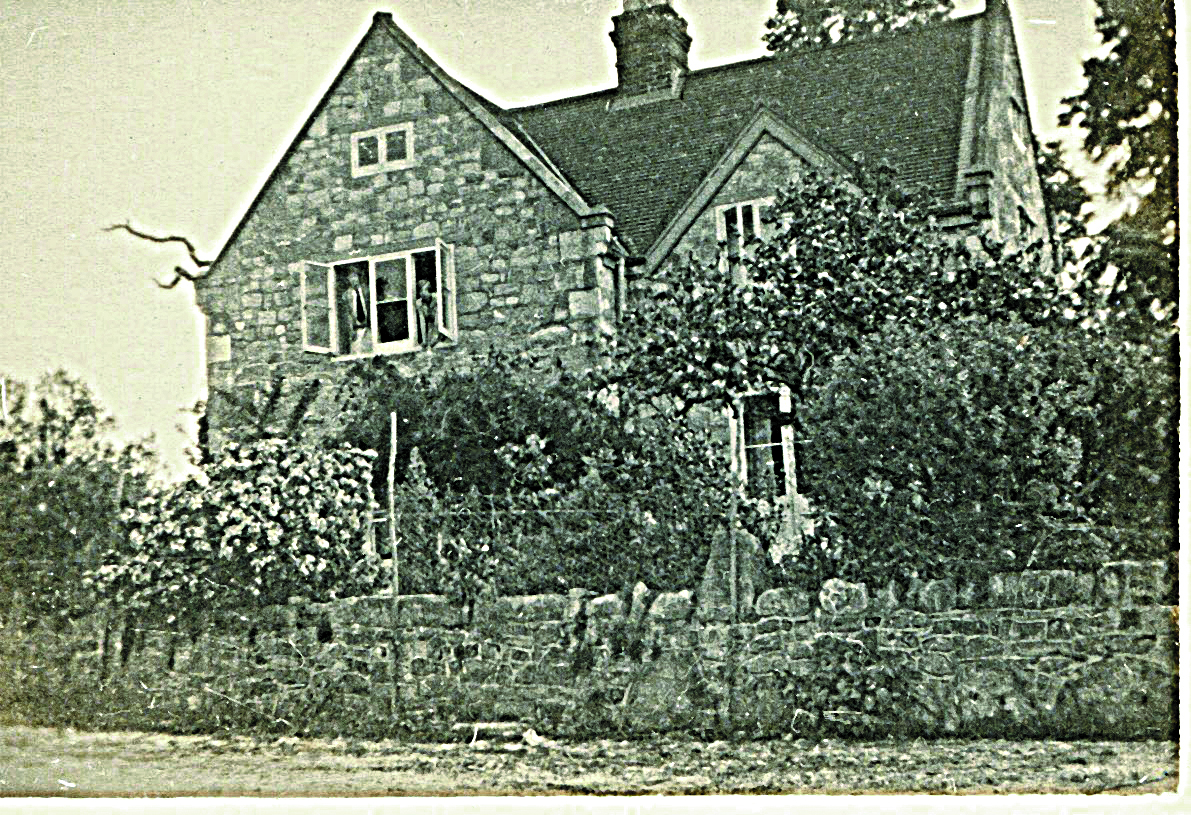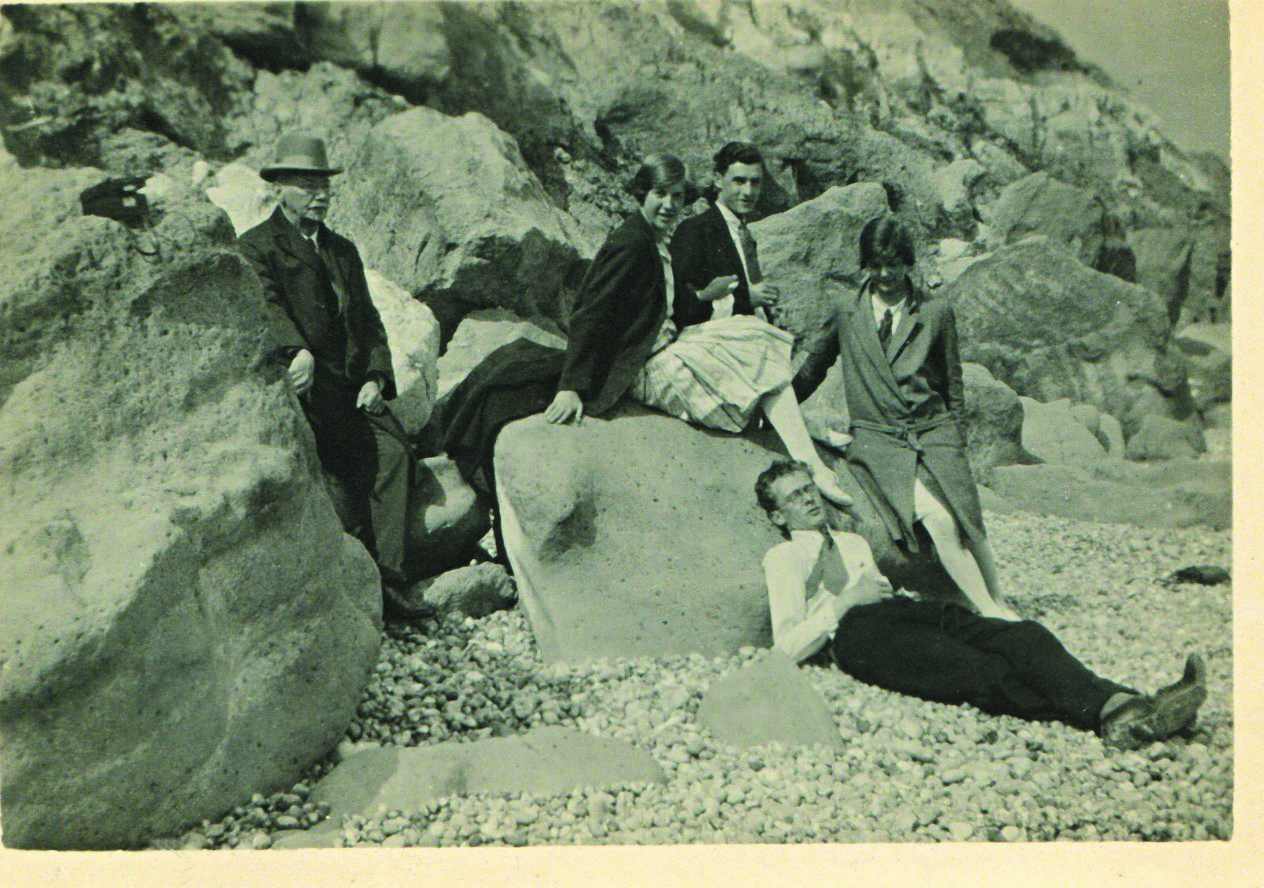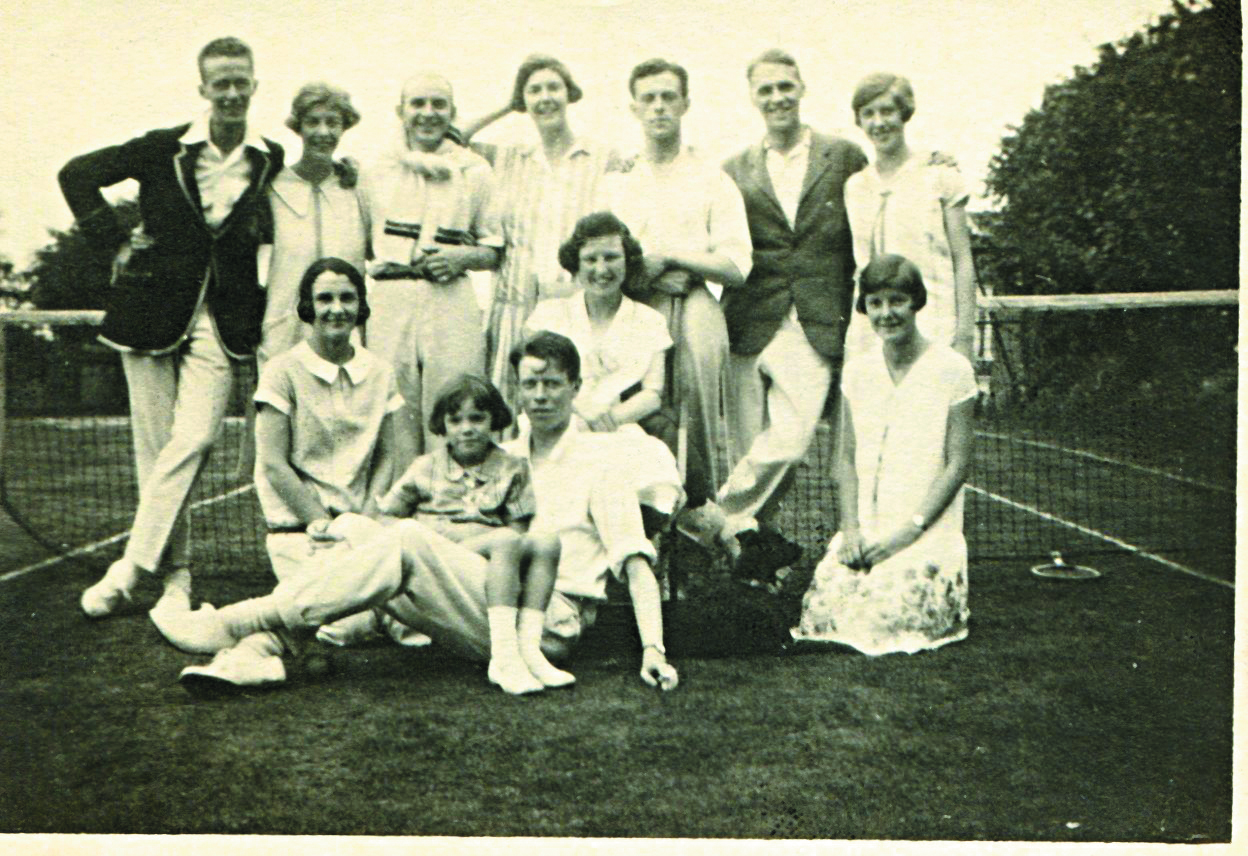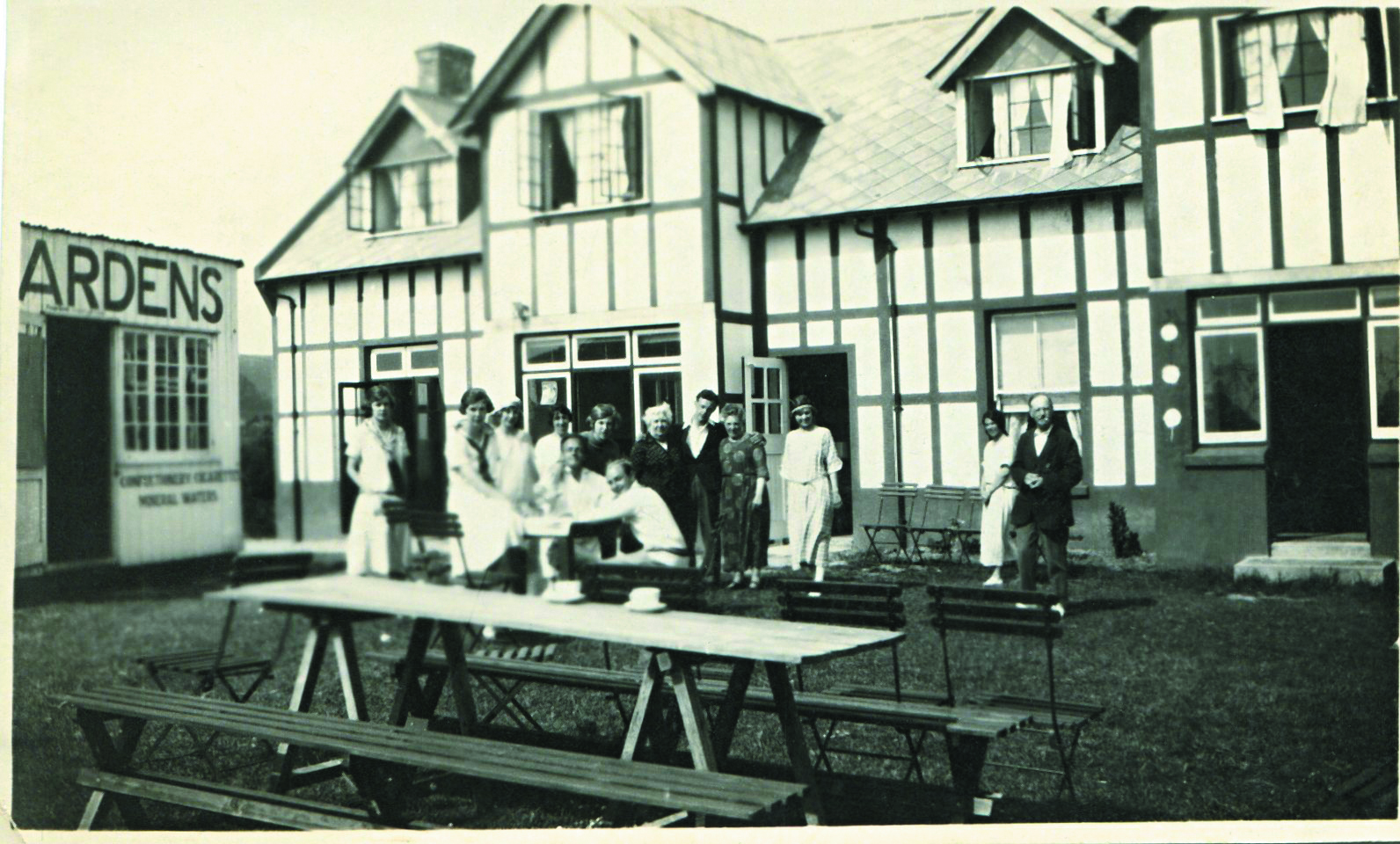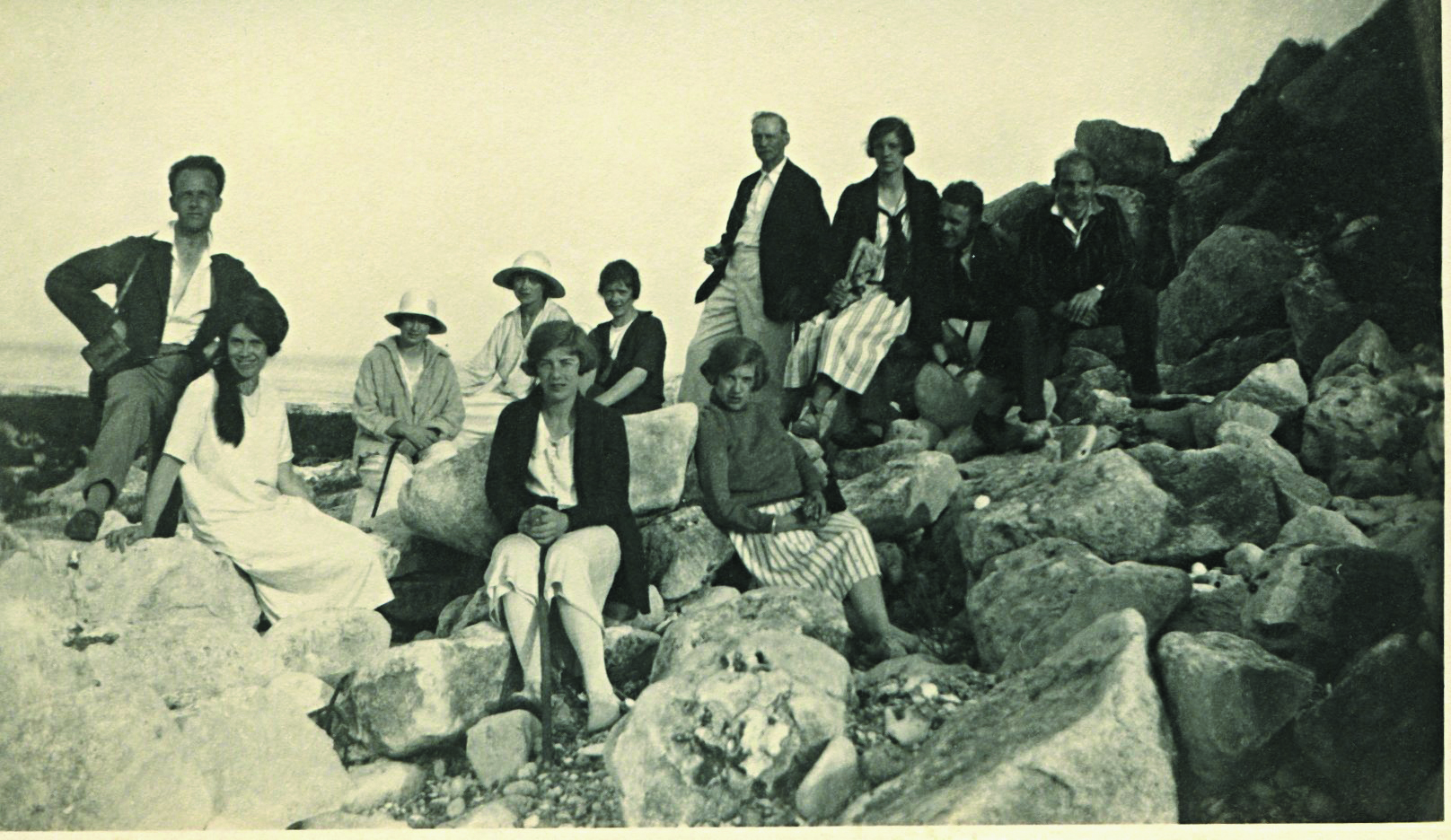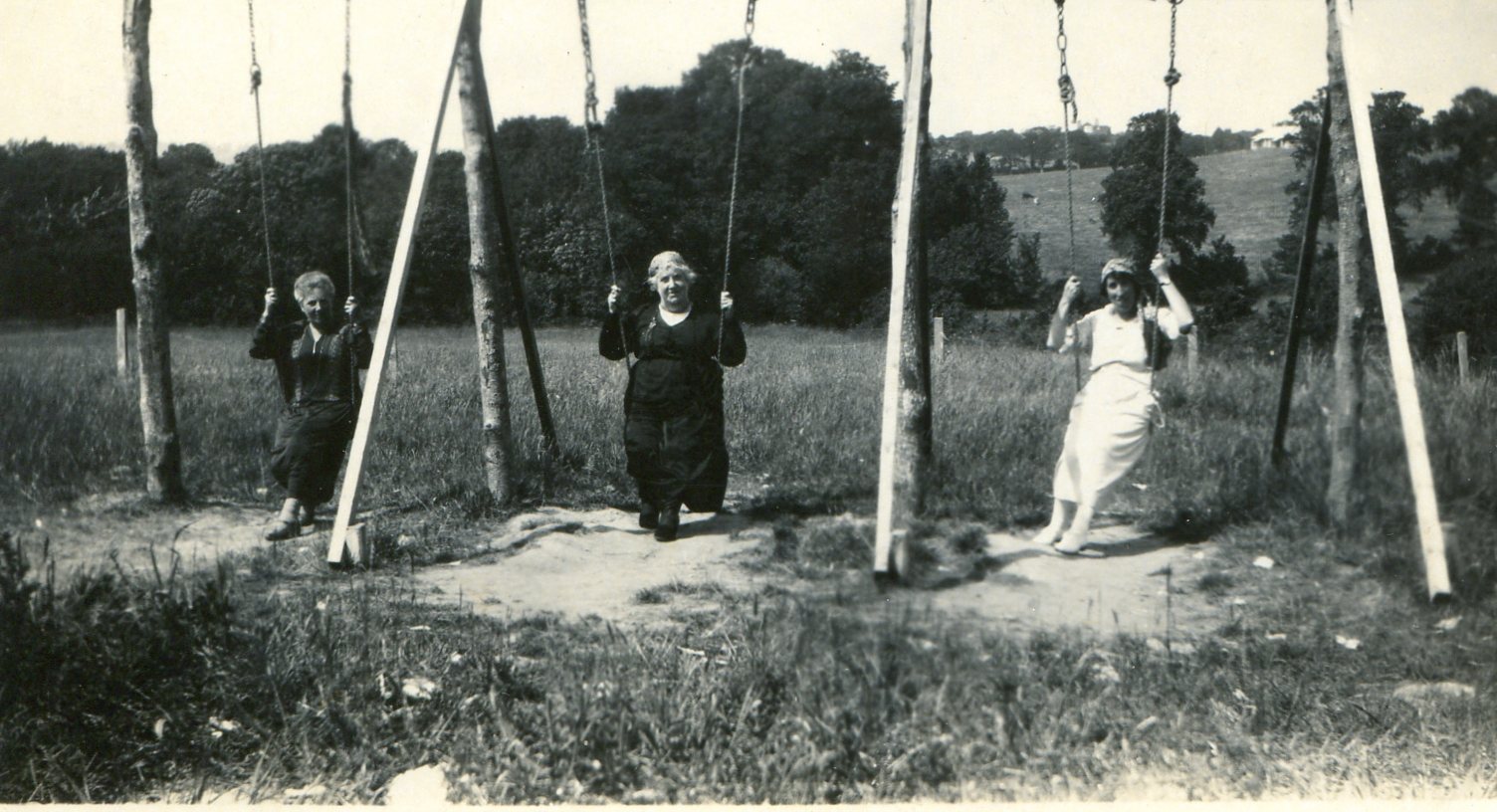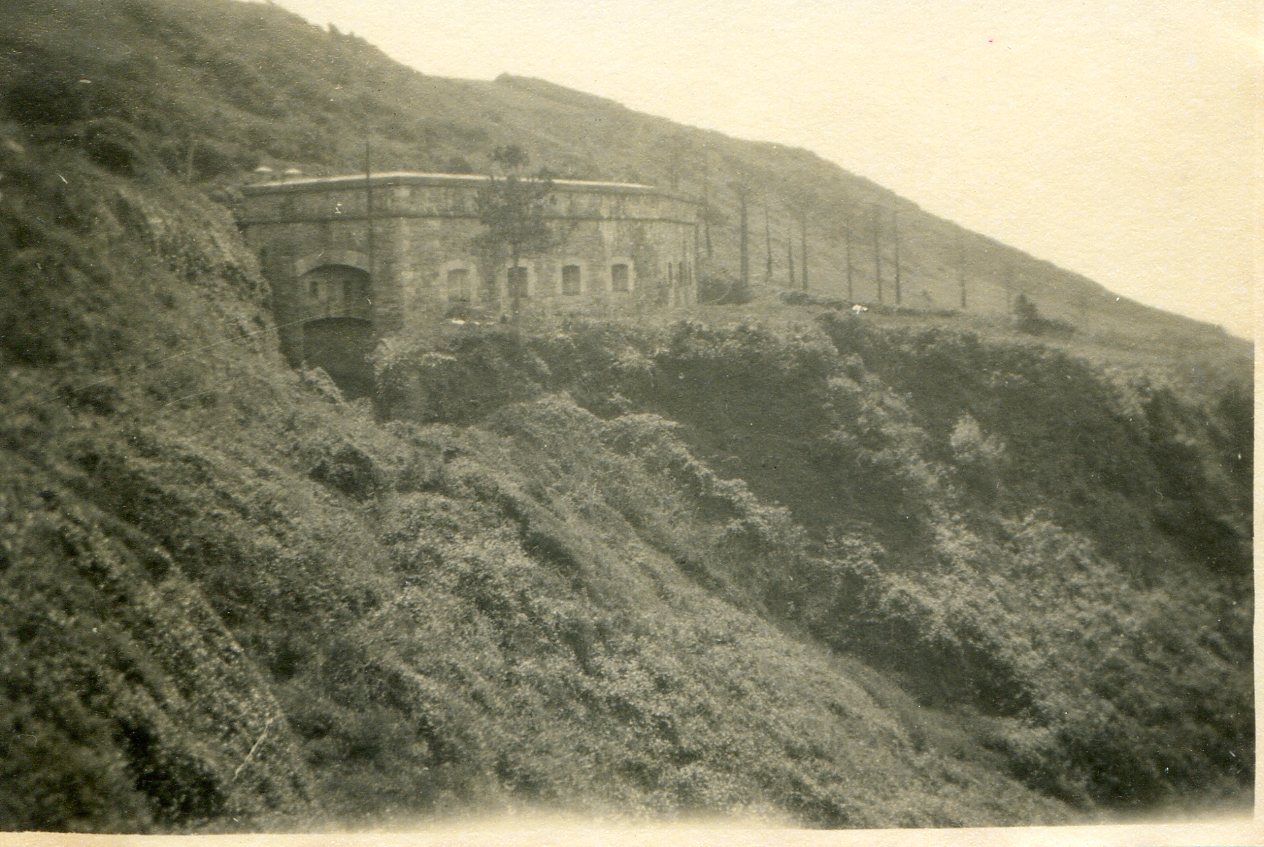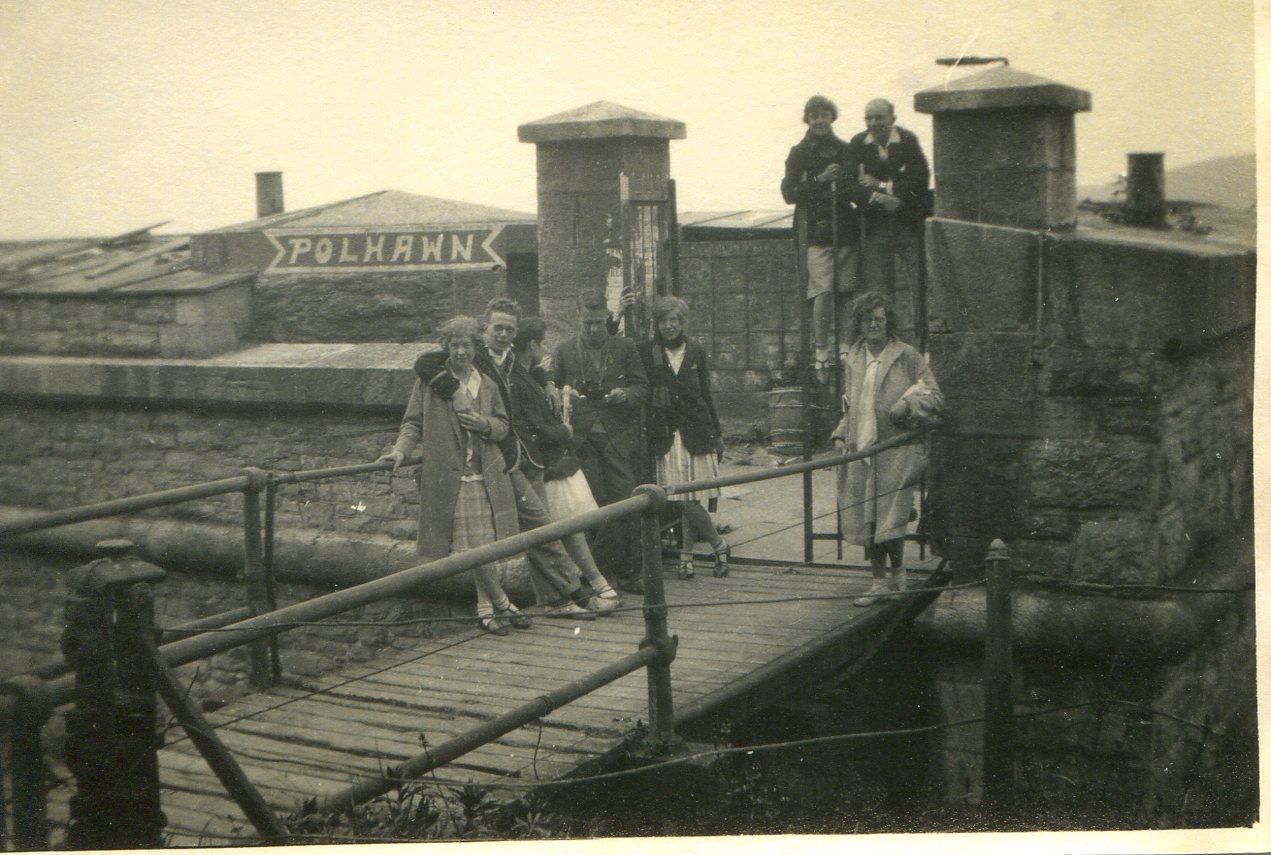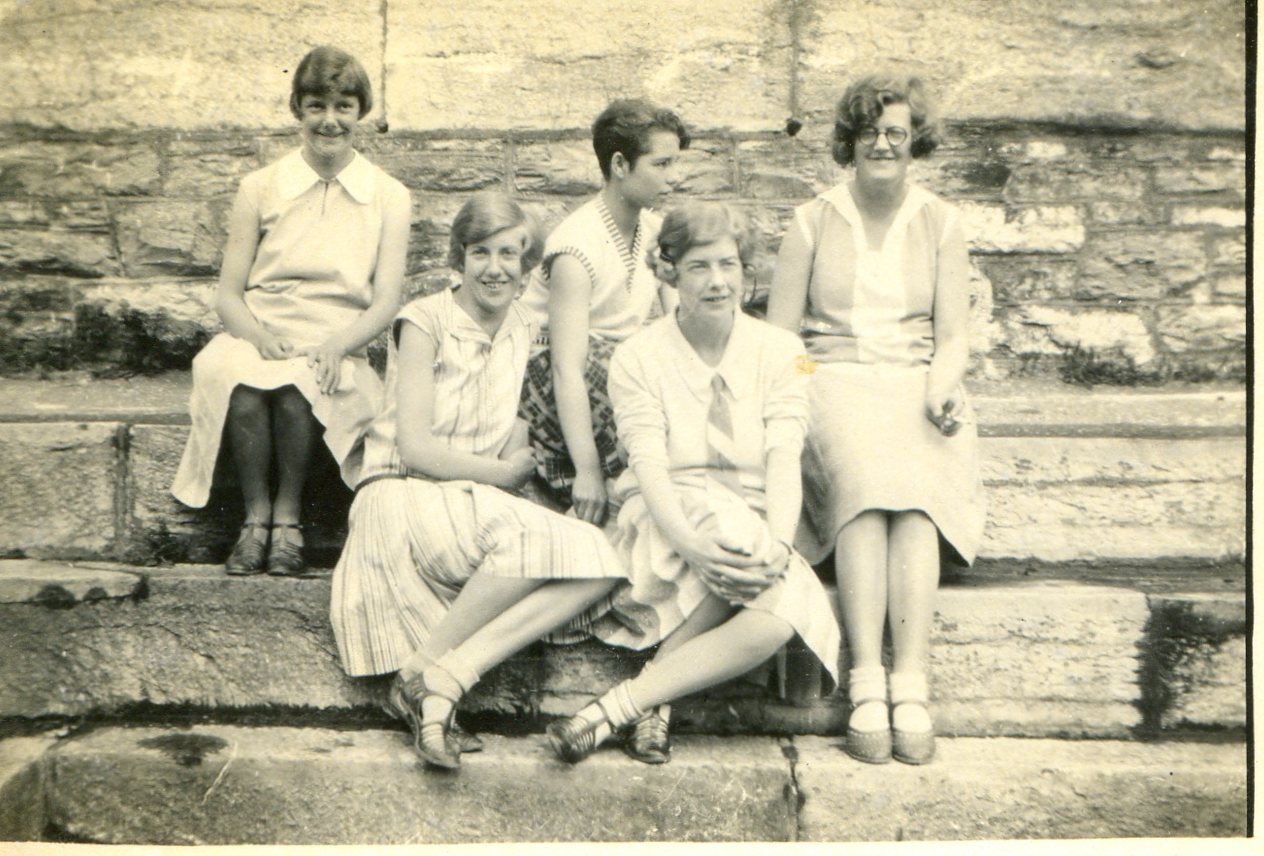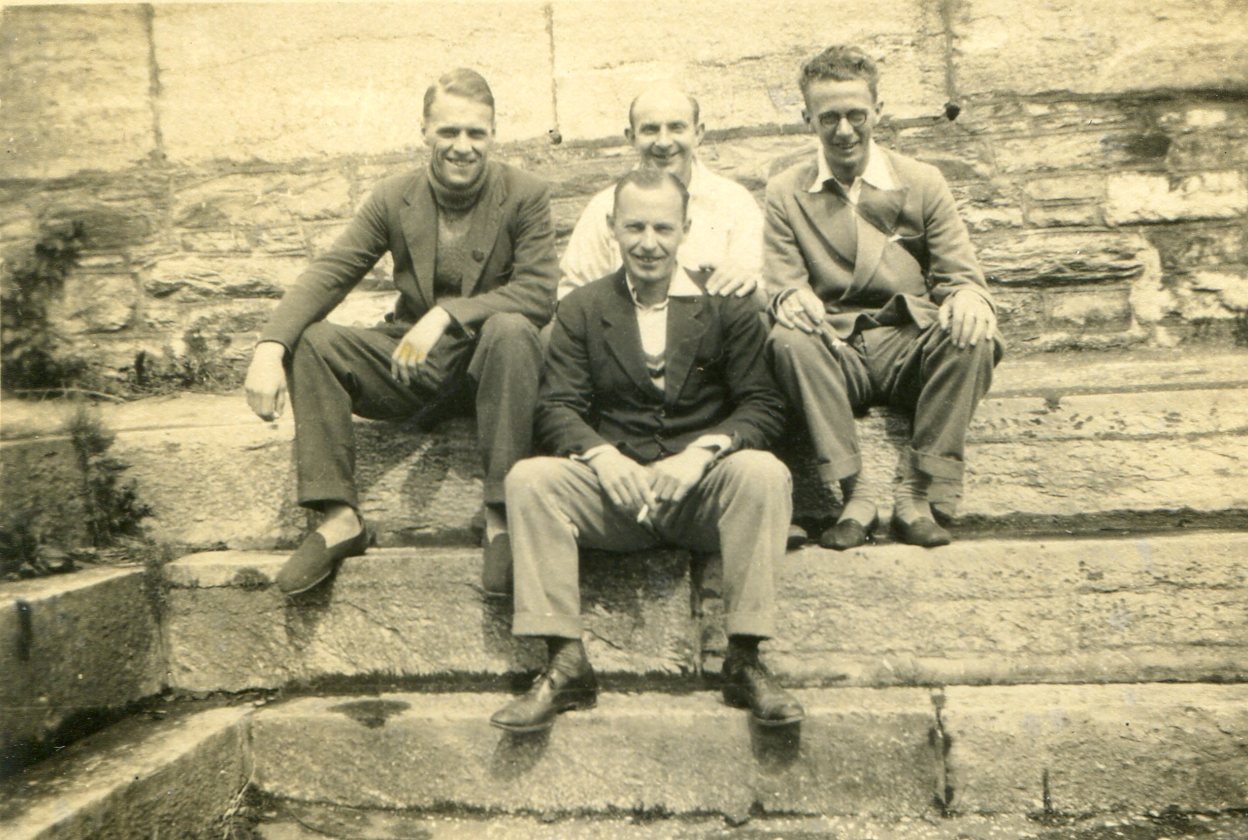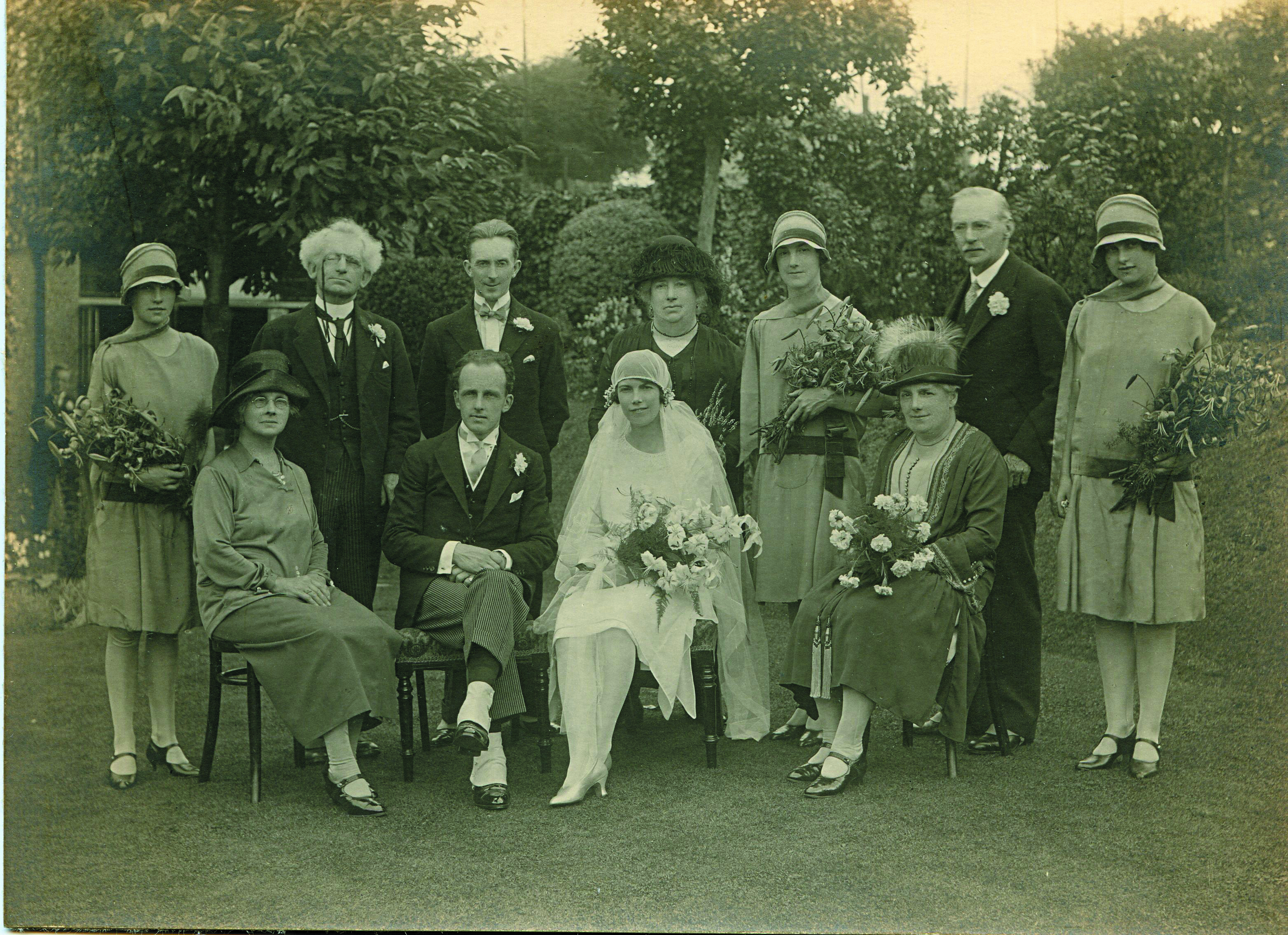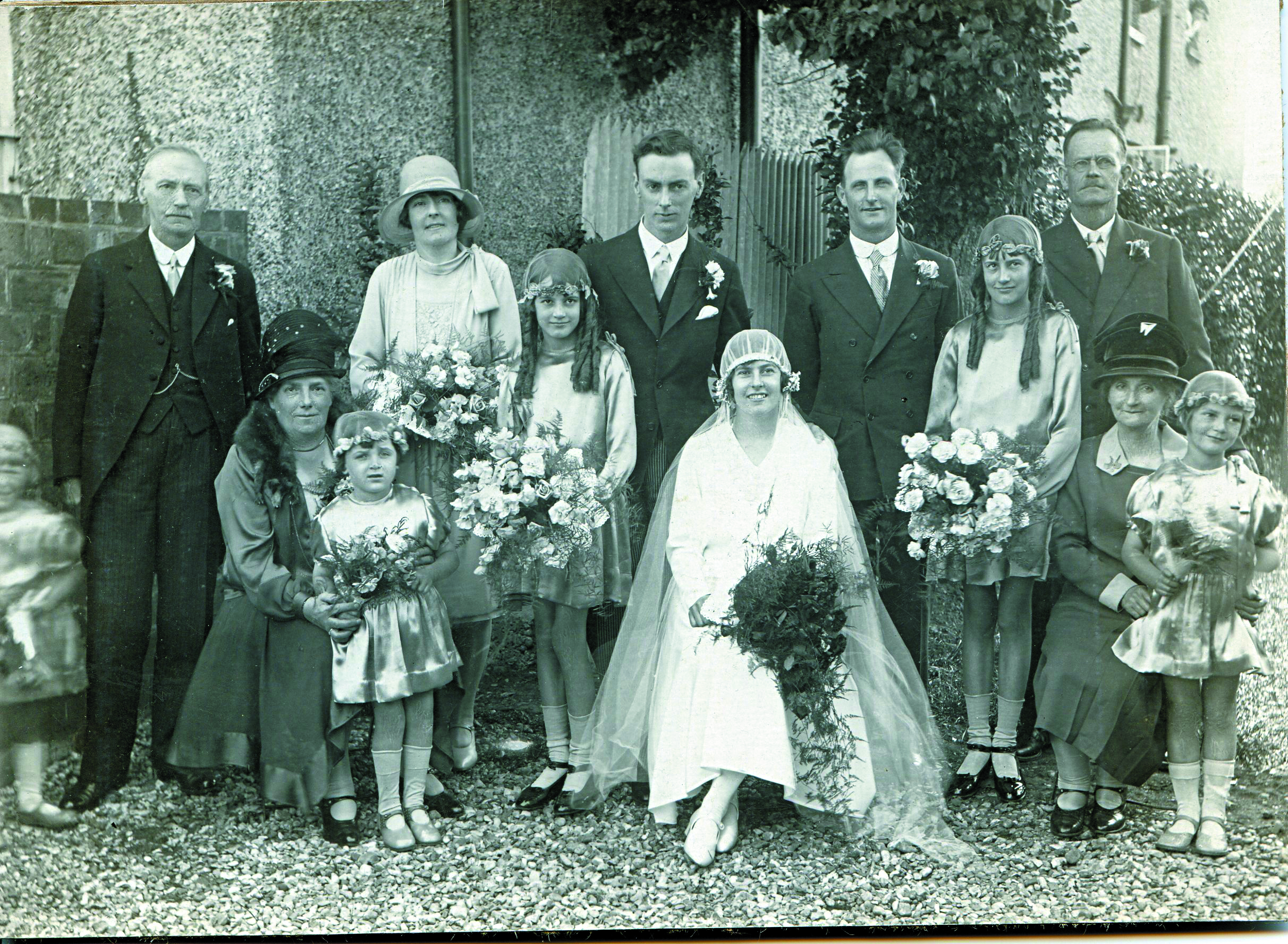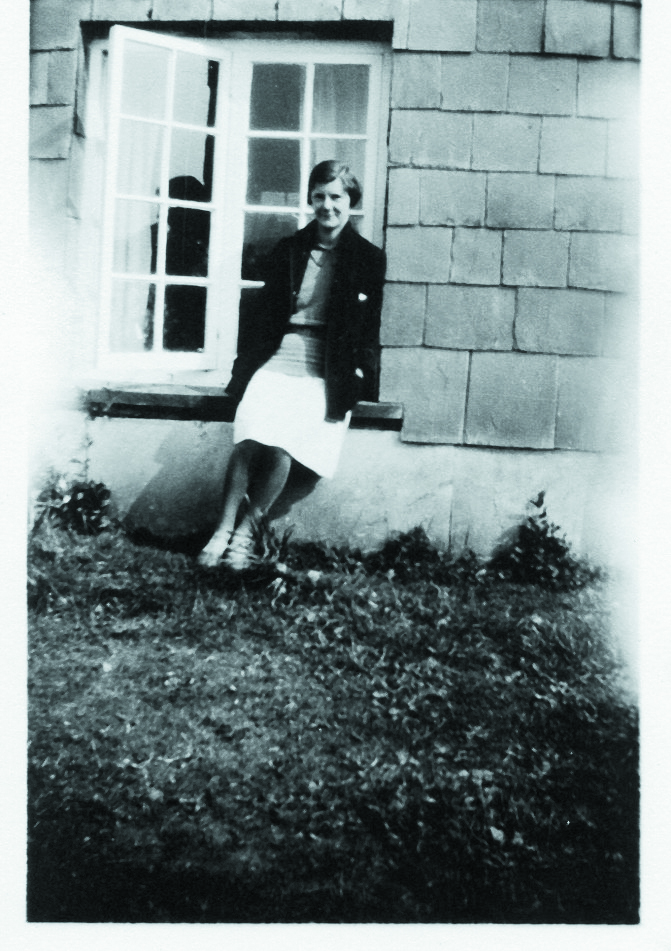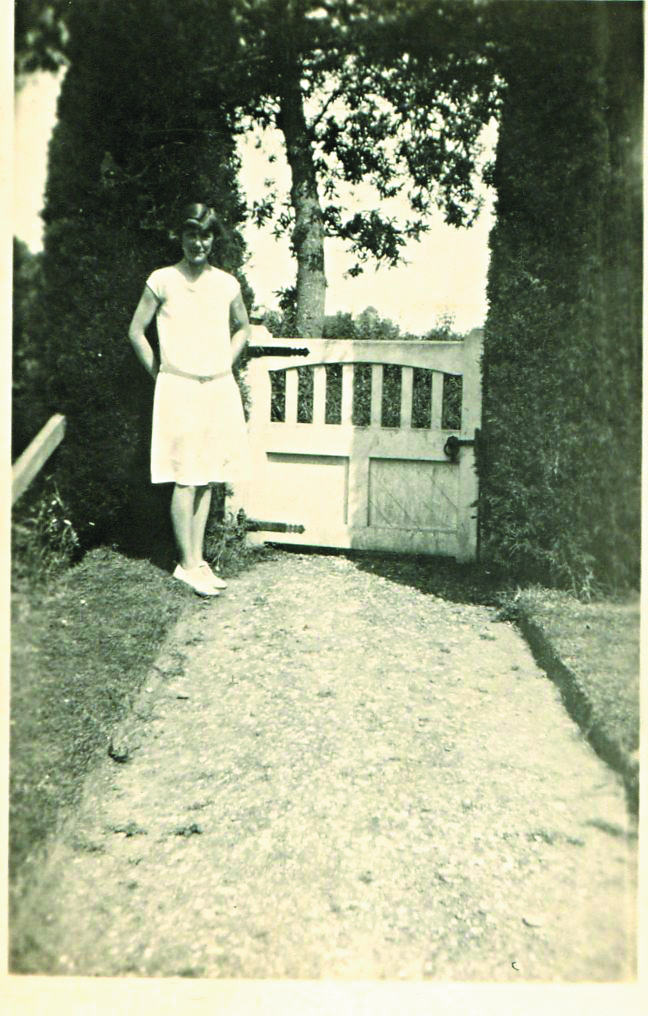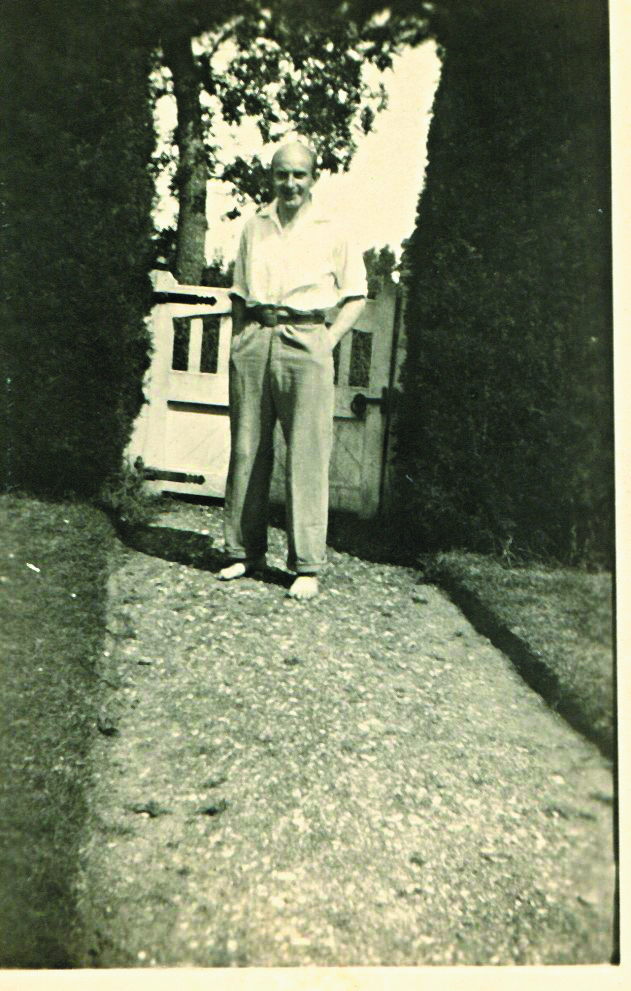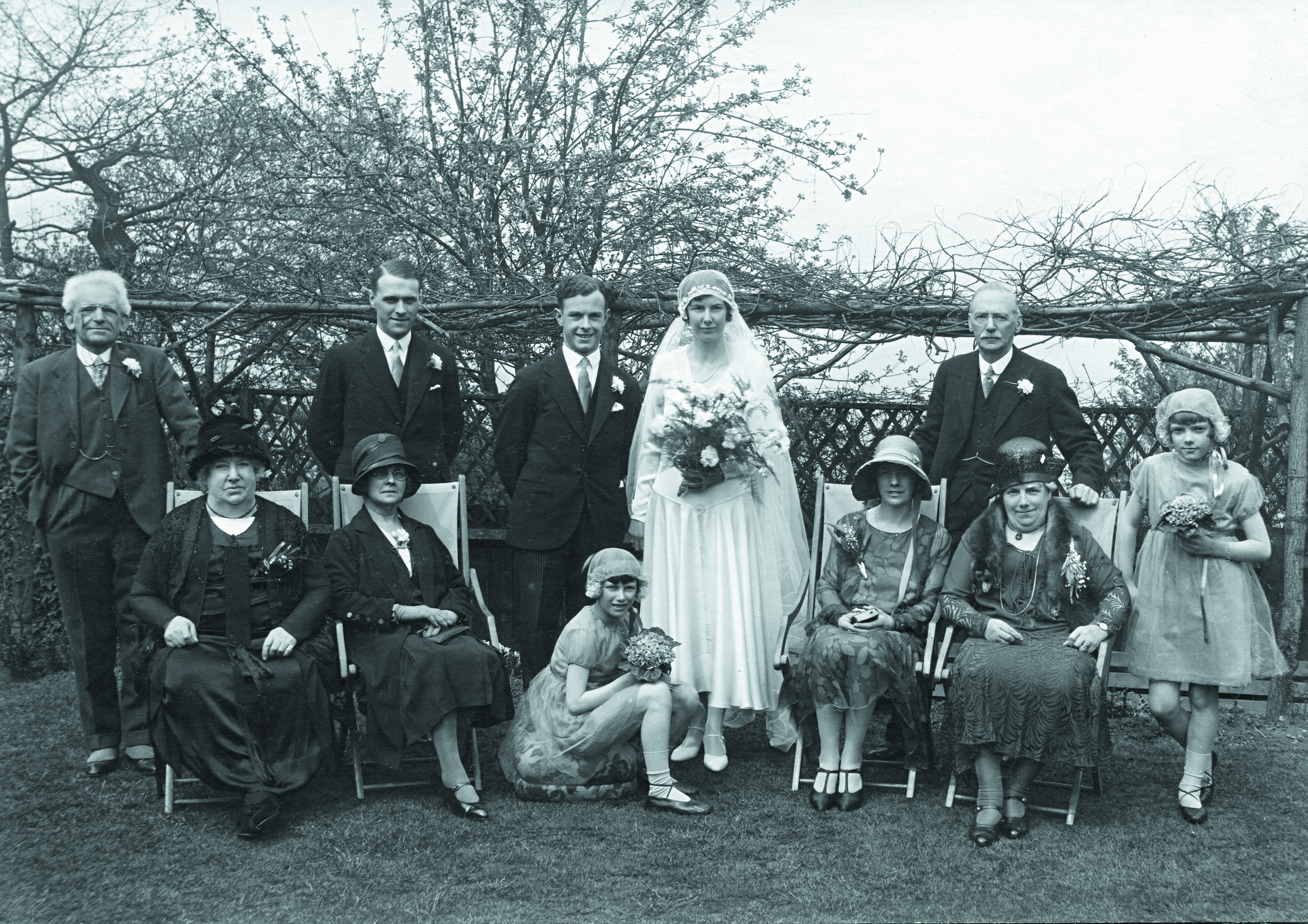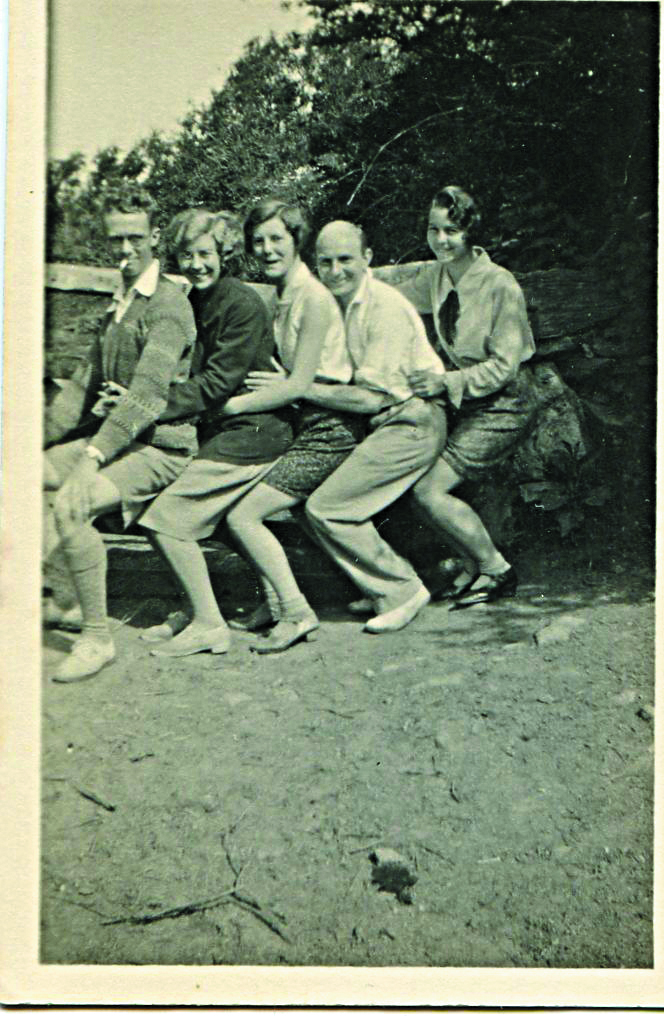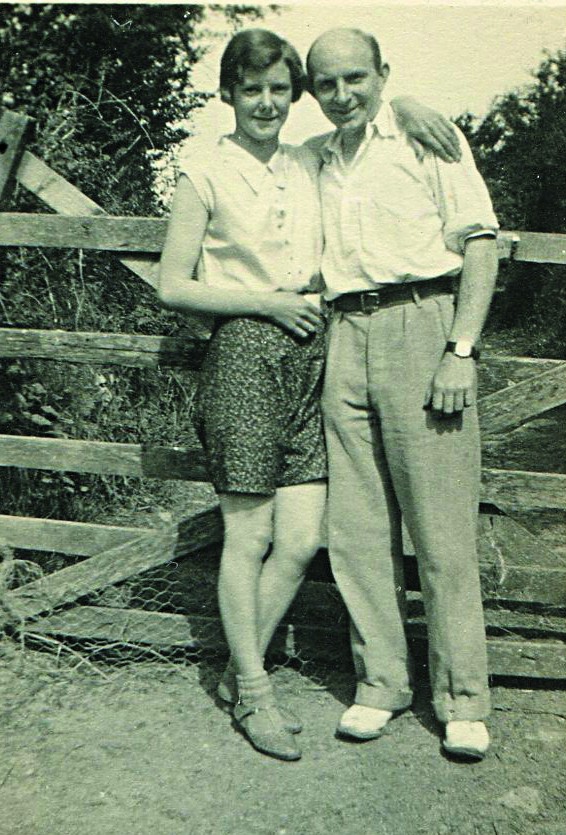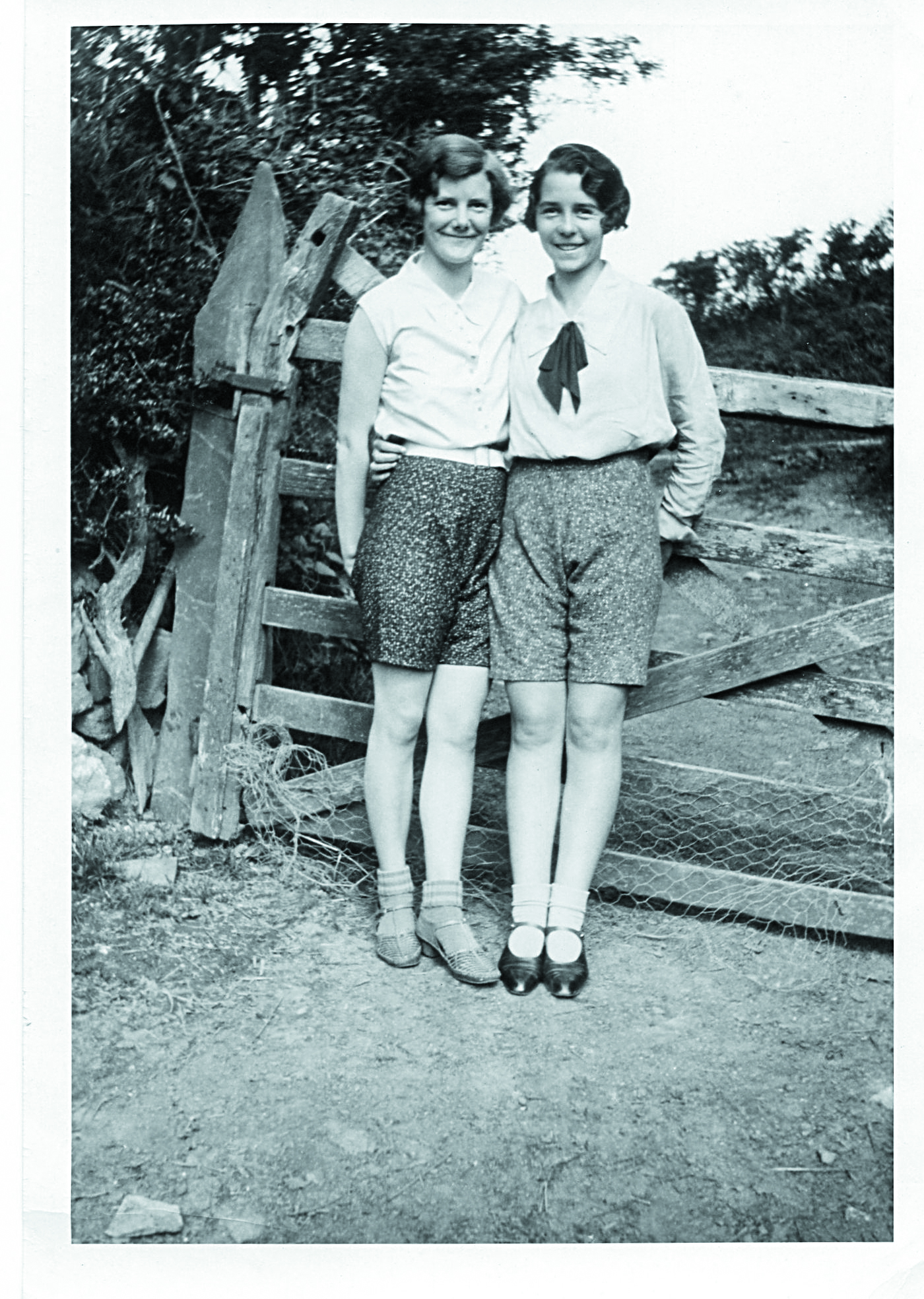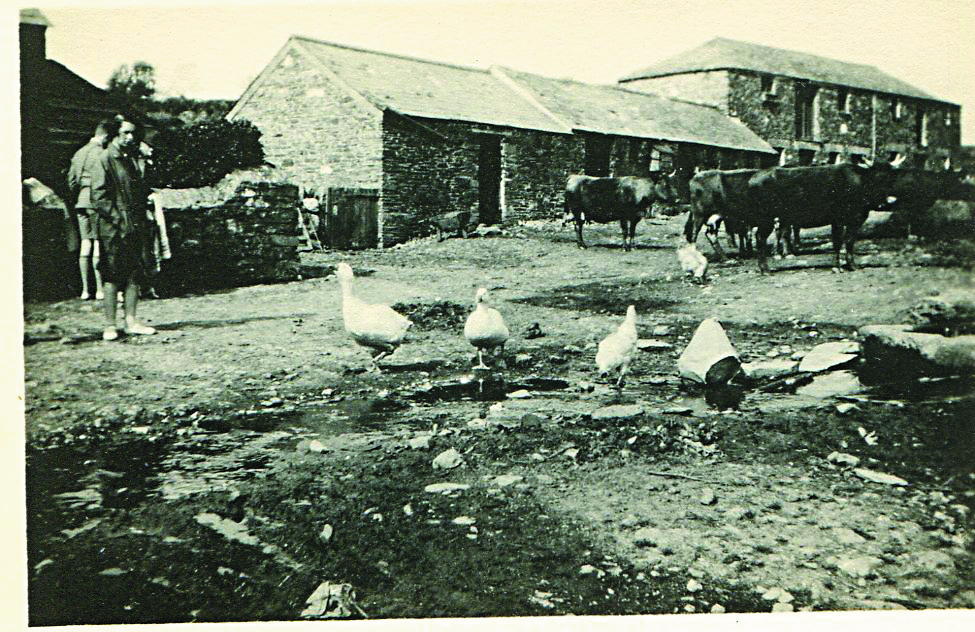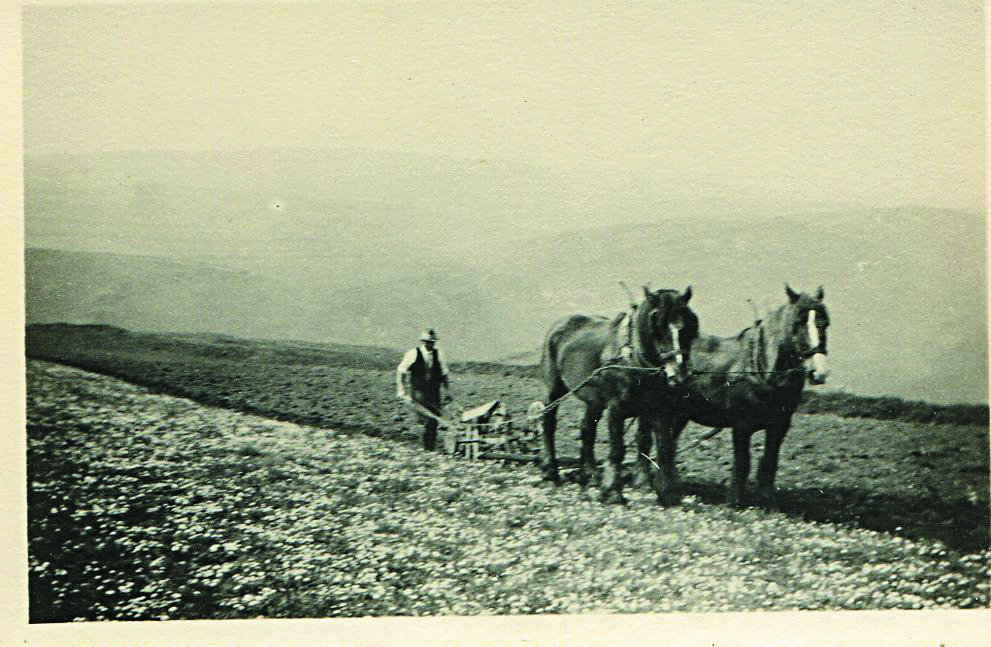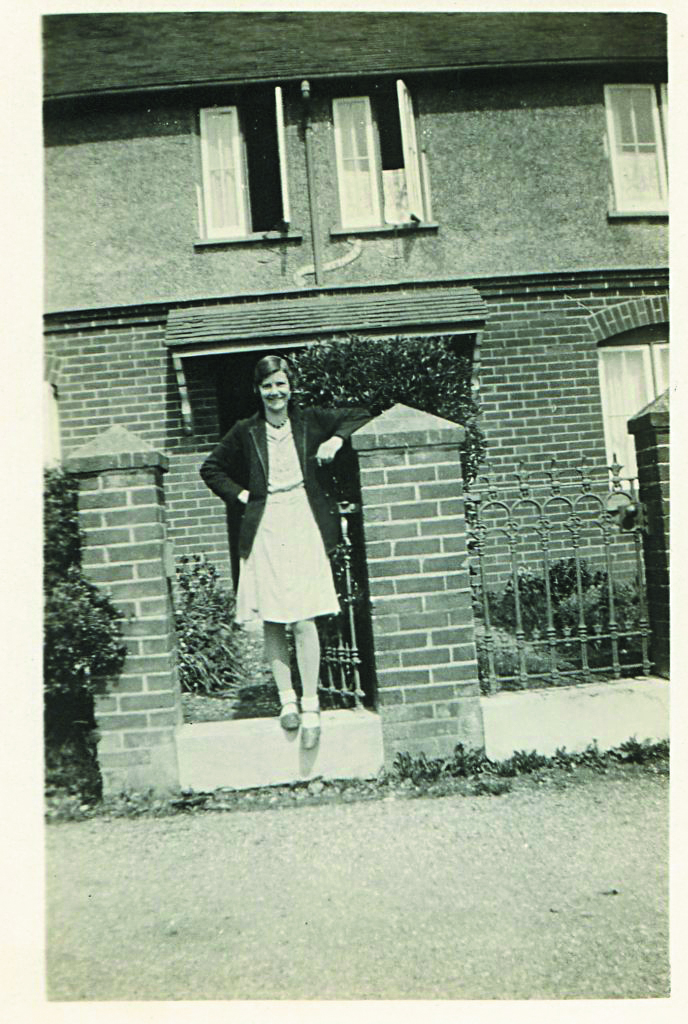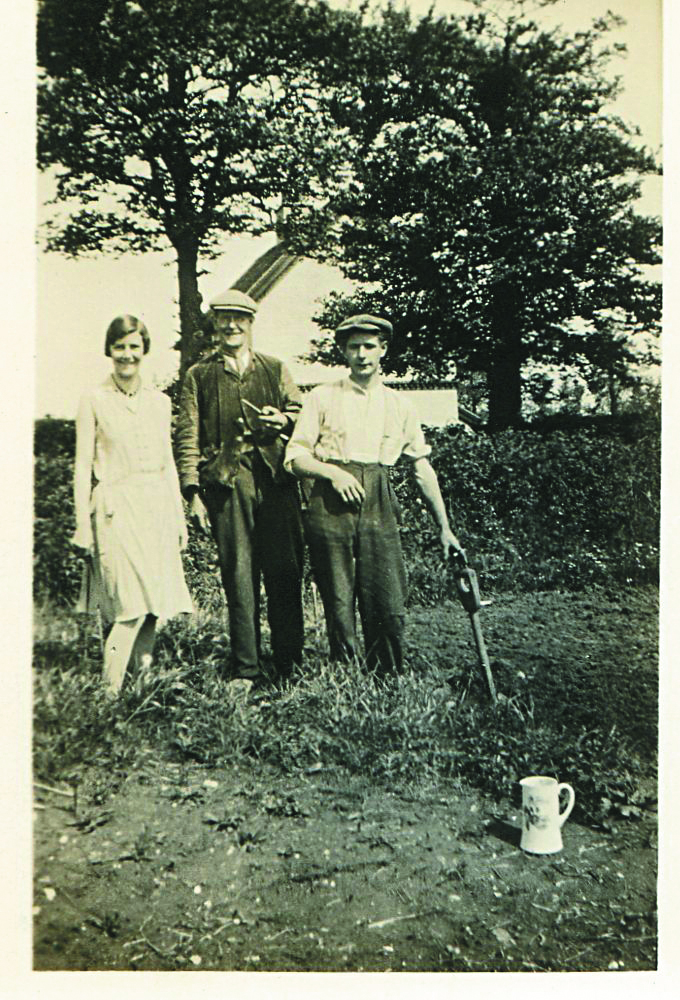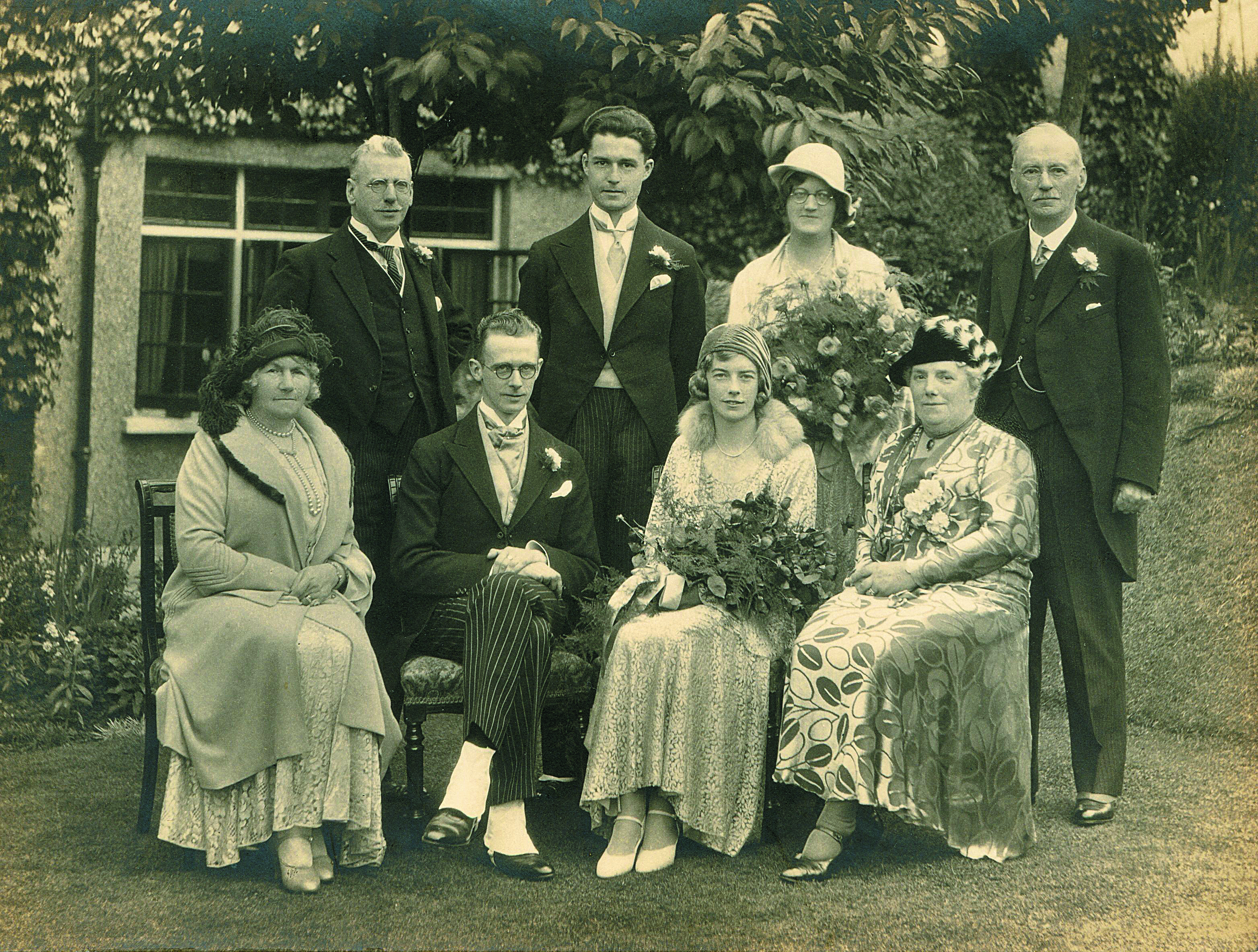Old Photos, Some Memories and a Lot of Guesswork – Part Two
Doug’s brother Claude returned from India about 1919. Photo 30 of him in his uniform was probably actually taken in 1914. Claude brought Frank Steele with him, who soon settled in and lived with the Atwell’s until he married Rene. They both found jobs in the Civil Service and on many occasions entertained us with their patter songs which they had used to entertain the troops in India, they were so professional.
Early in 1920 we had a holiday in Tankerton, see Photo 31, and spent our time near The Street, was there more sand then?
In Photo 32 the seesaw is still used and in Photo 33 Muriel was the first one to have her hair bobbed. I still had my curls and Doris her plait. It was Doug who called Muriel “Bobby” after her hair style and it stuck for the rest of her life.
One year Mrs. Powell hired the garden of a large house which in the Great War was used as a soldier’s convalescent home. Then me and my friends made up a ballet of the seasons. We made all our frocks grecian style and danced barefoot in a lovely enclosed part of the estate. It was fun and seemed to be popular. See the large Photo 34, Photo 35 and Photo 36 which are of us rehearsing in the garden at “Mount Edgcumbe”.
We always seemed to have visitors, various Aunts and Uncles and their families came to see us. Photo 37 is of Uncle Sydney Thompson and company in the garden. Uncle Sydney was related by marriage through his wife Ethel Roskilly, the daughter of Marian and George Cox Roskilly. Photo 38 is of Uncle Walter (Father’s Brother) and his family and friends sitting on the grass, as usual I seem to be prominent. I always remember “Aunty” Grandma (Elizabeth Roskilly) as we called her in her widow’s weeds, old fashioned bonnet and veil and I realised eventually why she was so called. It was because she and her husband Richard Roskilly adopted father (their Cousin’s Son) when his parents died when he was only nine.
Photo 39 shows Grandma’s sister (a Deavin) who wore a small black cap on her head rather like a jew, perhaps she had a bald patch. She also wore a bonnet. I must say that Grandma (Ann Roskilly) in the centre of the photo never wore anything to flaunt her widowhood, she had curly white hair which was bobbed and she laughed a lot – Photo 40 – was typical of her. When Aunt Marian Roskilly, another widow, visited us we had to be so proper and have morning prayers and grace before meals.
Later in 1920 Doug’s sister Winnie was Married to John Cummings (Jack) and as can be seen in Photo 41 my sister Winnie and I were bridesmaids. This photo was taken in the back garden of the Atwell’s house ” The Cedars”.
Photo 42, Photo 43 and Photo 44. Our first exciting holiday was in 1922 near the river Thames at Egham where we learnt to punt and row. The Atwells had a tiny house boat in front of us on the water – Photo 45. There were a few mishaps, trying to step from a rowing boat on to dry land was rather hazardous. Dorry Crump (Claude’s wife to be) had a bad time when the boat drifted slightly while she was hanging on to the landing post and she was stretched out over the water and nearly fell flat in. Claude saved her bacon by jumping in the water and catching her. We had many picnics by the side of the river and Grandma came too, in a punt and always with her hat on.
Another year, probably 1923, Father took us three youngest (Bobby, Doris and myself) together with Uncle Walter, Aunty Flossie (his 2nd wife) and Gladys to Ilfracombe – Photo 46 and Photo 47. We learnt how wonderful the West Country was, visiting Clovelly, Woolacombe, Doone Valley and had some lovely Devonshire teas, especially at a famous place called the “Hunters Inn” – Photo 48.
In 1924 we three youngest stayed alone at “Morris’s Farm”, near Whitecliff Bay, I.O.W. – see Photo 49 – and quite enjoyed ourselves but it gave Father fits having us there alone and he came down one weekend and stayed with the Hapgoods (Harry and Amy) just to see if we were alright. Photo 50 shows Father keeping an eye on us. I think he felt happier once we were courting with boys he knew; Doug for me, Eric Powell (our first cousin) for Bobby and Harold Collins for Doris. Because with later holidays he never worried as we usually went away together.
As I mentioned earlier, the field next to the house was turned into a tennis court, and Photo 51 is typical of one of the tennis parties taken at about this period of time.
Anyway in 1925 Father arranged a fantastic holiday in Whitecliff Bay (I.O.W.) by taking over a whole boarding house – Photo 52 – apart for one honeymoon couple, poor things. Nineteen of us including Uncle Walter’s family, Frank Steele and his Brother Pip (courting Rene and Phyllis respectively) and as usual Doug, Eric and Grandma. Photo 53 shows most of us on the shore with me and Father at the back and Photo 54 shows the three oldest Roskilly ladies: Mother, Grandma Ann and Aunty Flossie (Uncle Walter’s second wife) sitting on swings, which were in a field by the boarding house.
We had great fun together, went walking in bunches, one long one through the fields and “standing grass” to Brading, and an outing to Carisbrooke Castle. See the lovely picture – Photo 55 – of Grandma coming out of the main gates like Queen Victoria with her minions.
This year or was it 1924 I left school and went straight to work for John Green (Trissie’s husband) in the Commercial Calculating Company which meant learning to use a Comptometer before being sent out to different firms to do their stocktaking, new issues etc. I learnt a lot and got some confidence so when one firm offered me a job for more money I left the C.C.C. and worked for Caxton Floors until I left to get married.
In 1926 we had our best holiday ever in Polhawn Fort near Cawsand, Cornwall – Photo 56 and Photo 57 – Doug and me, Harold and Doris and Eric and Bobby – all courting couples – with Harold’s sister Kathleen, and his cousin Amy Stephens, and Bill Major, a friend of Doug’s from the bank. Photo 58 shows us girls and Photo 59 shows the boys. We filled the place which was built on the side of a cliff. It had enormous rooms and very deep windows which had been used as gun emplacements, fantastic. We lived in one huge room, girls slept in another and the boys in the last one. A footpath led down the cliff to a private beach, which was all ours, sand and wonderful bathing.
One night the owners Mr. Powell and his wife, a retired publican, had a party for all their rural friends and they asked Doug to play the piano for them. This he did and they sang old songs and danced while glasses of beer mounted on the piano. We never laughed so much as we did that night, giggling outside the door. I do not know how Doug stuck it, he was good at that sort of thing. That fort is now a hotel but I bet it is not so nice as when we were there.
I cannot remember what we did in 1927, although Rene and Frank were married on the 6th August – see Photo 60.
I also cannot recall what we did in 1928, but by this time Doug and I were engaged and Doug’s brother Claude finally got married to Dorry in the latter part of that year and went to live in a flat next to Hornimans Museum.
In 1929 Dick got married to Dolly (Doris Hobbs) in Bembridge – Photo 61 and Photo 62 – so we took a house called Watergate – Photo 63 – and had an assortment of people staying there. Photo 64 and Photo 65 show Doug and I standing by the gate. I think Bobby must have been ill with T.B. at the time because she was not there.
1930 was the year that Phyllis and Pip Steele were married in the spring – see Photo 66. I did not mention it earlier, but Pip was not his real name, which was actually Wallis, but he had been known as Pip since he was a baby, having been referred to then as a “little pip” and it stuck with him for the rest of his life.
Anyway later that year Doug and I, Harold and Doris, Amy and her cousin’s husband Brian, arranged a holiday at a farm near Boscastle, a small place called Beeny which turned out to be truly rural – Photo 67 shows us all excluding Brian, Photo 68 shows Doug and I and Photo 69 shows Amy and I. You entered through a muddy farmyard, full of chickens, a loo at the end of the garden and two enormous shire horses to do the ploughing – see Photo 70 and Photo 71. It was great fun even when the wall crumbled as Amy moved her bed out. However being May the thrift was out so it was very beautiful. We visited Tintagel and saw King Arthur’s Castle, the brave ones walked round the tiny footpath on the edge of the cliff to visit the spot, but not for me. I sat amongst the thrift and enjoyed the heavenly view.
We also visited Looe, if only I had known then how near we were to the Roskilly ancient home, from 1700 at least, Lanreath. I wonder what the Roskillys of those days did, they all seemed to stick together as we did as a family once we were married. No doubt they were Celts and probably moved there from lower down in Cornwall near St. Keverne. It has apparently been written in some ancient document that in the 34th year of the reign of Henry VIII, which was about 1543, that “Euryn Reskelly being seigned of one messuage: 80 acres, 20 of meadow. 40 of pasture and 20 of gorse in Reskelly in fee by inheritance on 6th September (1543?) Alexander Penrose of Trethne, Pascow Careyn of Polhorman, Ralf Jenkyn of Garrowe, John Tregouse of Tregouse Keryn (Keverne), William Williams of Grognth and others entered by force and still keep possession”.
In 1931 Doug and I were actually allowed to go away alone to stay with Dolly’s mother and Father, Mr and Mrs. Hobbs at Bembridge. Photo 72 and Photo 73 shows Doug and I outside their house, Photo 74 shows me together with Mr Hobbs and their son Harold (Dolly’s brother). Mrs Hobbs cooked us wonderful food and as it was May and the weather was dodgy we spent a lot of time at the “Crab and Lobster” playing darts. A truly rural pub then.
1931 was also the year that Doris and Harold Collins married on the 8th September – see Photo 75 – which was rather a grand affair.
So this was the end of my early life, which, on looking back, I realise how safe and comfortable it was. We were so lucky to have been born into a large family which nobody can afford these days and with a father who was so good to us and a Mother who worked so hard. But we all helped with the work and when one got married the next one in line left work to help in turn.
